-
About
-
Vision & Mission
-
Dean Desk
-
Faculty
-
Board of Studies
-
Programme Offered
- MBBS - Medicine
- MS - Opthalmology
- MS - Orthopaedics
- MS - ENT
- MS - General Surgery
- MD - Pharmacology
- MD - Bio - Chemistry
- MD - Physiology
- MD - Anatomy
- MD - DVL (Dermatology )
- MD - Radiodiognosis
- MD - Anaesthesology
- MD - Obstetrics and Gynaecology
- MD - Paediatrics
- MD - TB and Chest Disease
- MD - Psychiatry
- MD - General Medicine
- MD - Community Medicines
- MD - Microbiology
- MD - Pathology
- DM - Nurology
- PhD
-
Value Added Courses
-
Events
-
Publication
Welcome to Medicine
About The School :
School of Medicine was established in the year 2003 with the aim of providing excellent medical education run by Sri Lakshmi Ammal Educational Trust established in 1984 and it has come under the ambit of BHARATH INSTITUTE OF HIGHER EDUCATION & RESEARCH. The School of Medicine has UG and PG courses in 19 specialities. School of Medicine is spread over three campuses. It is provided with state of art infrastructure in term of its blocks of buildings, which include cozy, comfortable and well-furnished departments, laboratories, classrooms for students, separate quarters for staff and nurses besides equipment of world class technological quality. The school is backed by highly qualified and experienced staff, well equipped laboratories, library, and modern teaching aids. The Hospital services are fully computerized as per the requirement of the NMC.
Free medical service is given to the poor and needy people. Separate rural and urban health training centres have also been established so as to impart field practice training to medical students and helping the needy people nearby .Family adoption scheme for each graduate student enables them to understand the social fabric setup for treating rural India. The school has a separate sophisticated and well equipped Research &Development Wing with adequate faculty to carry out sponsored projects.
Vision & Mission
Our Vision :
- - To provide excellent Medical Education with the Aid of latest and modern equipments.
- - To provide an excellent environment for the Medical Students to learn medicine and practice the same.
- - To provide facilities for the medical students to learn skills under the guidance of the expert teachers.
- - To provide research facilities and to motivate students and faculty members to take up research projects.
- - And finally to create an atmosphere of continuous learning keeping abreast with fast changing theories and techniques in Medicine and its allied specialities.
Our Mission :
Is to send into the society, well educated, well mannered, with fully equipped, socially committed Doctors who would be useful to the society at large and who would willingly commit themselves to create an atmosphere free of disease and sufferings.
Deans Desk :
- XXXXXXX, XXXXXXX
- Professor and Dean,
- School of Medicine, BIHER
The School of Medicine, offers a patient-centered collaborative learning experience, driven by the primary value, "The needs of the patient comes first."
Our vision in a rapidly changing era of health care reform is to educate physician leaders in patient-centered, science-driven, team-based, high-value health care. A highly selective admissions process, inter professional team learning and a student centered, flexible, innovative curriculum make our graduates highly sought after by residency directors.
Our medical school curriculum leverages innovative scientific capabilities, expertise and resources to provide medical education focused on preparing physicians for the medicine of tomorrow.
The school provides diverse learning opportunities in a variety of clinical settings across the country. Our students have access to exceptional experiential learning facilities, including a state-of-the-art Central Research .
Facility. We leverage the rich scientific and clinical resources to offer students a deep range of educational opportunities, including the, Program in Professionalism and Ethics, Center for Innovation, and specialized centers that combine resources of research and practice.The faculty-to-student ratio is much higher than the ratio proposed by Medical Council of India.
Thus we pool in higher volumes of knowledge and expertise from our teaching faculty to benefit our students and patients.
We have a history of incredible success in a short duration. The future model of medical education will prepare the next generation of physician leaders to improve health care delivery for the 21st century.
Seminar Details (JULY 2017 – JUNE 2018) :
| S.No | Event Name | Event Date | Event Detail |
|---|---|---|---|
|
Click Here |
|||
|
Click Here |
|||
|
Click Here |
|||
|
Click Here |
|||
|
Click Here |
|||
|
Click Here |
|||
|
Click Here |
|||
|
Click Here |
|||
|
Click Here |
|||
|
Click Here |
|||
|
Click Here |
|||
|
Click Here |
|||
|
Click Here |
|||
|
Click Here |
|||
|
Click Here |
|||
|
Click Here |
|||
|
Click Here |
|||
|
Click Here |
|||
|
Click Here |
|||
|
Click Here |
|||
|
Click Here |
|||
|
Click Here |
|||
|
Click Here |
|||
|
Click Here |
|||
|
Click Here |
|||
|
Click Here |
|||
|
Click Here |
|||
|
Click Here |
|||
|
Click Here |
|||
|
Click Here |
|||
|
Click Here |
|||
|
Click Here |
|||
|
Click Here |
|||
|
Click Here |
|||
|
Click Here |
|||
|
Click Here |
|||
|
Click Here |
|||
|
Click Here |
|||
|
Click Here |
|||
|
Click Here |
|||
|
Click Here |
|||
|
Click Here |
|||
|
Click Here |
|||
|
Click Here |
|||
|
Click Here |
|||
|
Click Here |
|||
|
Click Here |
|||
|
Click Here |
|||
|
Click Here |
|||
|
Click Here |
|||
|
Click Here |
Seminar Details ( 2016 – 2017) :
| S.No | Particulars | Event | Event Detail |
|---|---|---|---|
|
|
|||
|
|
|||
|
|
|||
|
|
|||
|
|
|||
|
|
|||
|
|
|||
|
|
|||
|
|
|||
|
|
|||
|
|
|||
|
|
|||
|
|
|||
|
|
|||
|
|
|||
|
|
|||
|
|
|||
|
|
|||
|
|
|||
|
|
|||
|
|
|||
|
|
|||
|
|
|||
|
|
Events
Seminar - (2017 - 2018) :
| S.No | Title | Number of Participants | Date | Event Detail |
|---|---|---|---|---|
|
|
||||
|
|
Conference Details ( 2017 – 2018) :
| S.No | Particulars | Event | Event Detail |
|---|---|---|---|
|
|
|||
|
|
|||
|
|
|||
|
|
|||
|
|
|||
|
|
|||
|
|
|||
|
|
|||
|
|
|||
|
|
|||
|
|
|||
|
|
|||
|
|
|||
|
|
|||
|
|
Conference Details ( 2018 – 2019) :
| S.No | Particulars | Event | Event Detail |
|---|---|---|---|
|
|
|||
|
|
|||
|
|
|||
|
|
|||
|
|
|||
|
|
|||
|
|
|||
|
|
|||
|
|
|||
|
|
|||
|
|
|||
|
|
|||
|
|
|||
|
|
|||
|
|
|||
|
|
|||
|
|
|||
|
|
Conference Details ( 2019 – 2020) :
| S.No | Particulars | Event | Event Detail |
|---|---|---|---|
|
|
|||
|
|
|||
|
|
|||
|
|
|||
|
|
|||
|
|
|||
|
|
|||
|
|
|||
|
|
|||
|
|
|||
|
|
|||
|
|
|||
|
|
|||
|
|
|||
|
|
|||
|
|
|||
|
|
|||
|
|
|||
|
|
|||
|
|
|||
|
|
|||
|
|
|||
|
|
|||
|
|
|||
|
|
|||
|
|
Seminar Details ( 2018 – 2019) :
| S.No | Particulars | Event | Event Detail |
|---|---|---|---|
|
|
|||
|
|
|||
|
|
|||
|
|
|||
|
|
|||
|
|
|||
|
|
|||
|
|
|||
|
|
|||
|
|
|||
|
|
|||
|
|
|||
|
|
|||
|
|
|||
|
|
|||
|
|
|||
|
|
|||
|
|
|||
|
|
|||
|
|
|||
|
|
|||
|
|
|||
|
|
|||
|
|
|||
|
|
|||
|
|
|||
|
|
|||
|
|
|||
|
|
|||
|
|
|||
|
|
|||
|
|
|||
|
|
|||
|
|
|||
|
|
|||
|
|
|||
|
|
|||
|
|
|||
|
|
|||
|
|
|||
|
|
|||
|
|
|||
|
|
|||
|
|
|||
|
|
|||
|
|
|||
|
|
|||
|
|
|||
|
|
|||
|
|
|||
|
|
|||
|
|
|||
|
|
Events
Seminar - (2019 - 2020) :
| S.NO | Title | Number of Participants | Date | Event Detail |
Seminar Details ( 2020 – 2021) :
Guest Lecture Details ( 2020 – 2021) :
| S.No | Particulars | Event | Event Detail |
|---|---|---|---|
|
|
|||
|
|
Workshop Details ( 2016 – 2017) :
| S.No | Particulars | Event | Event Detail |
|---|---|---|---|
|
|
|||
|
|
|||
|
|
|||
|
|
|||
|
|
|||
|
|
|||
|
|
|||
|
|
Workshop Details ( 2017 – 2018) :
| S.No | Particulars | Event | Event Detail |
|---|
Events
Workshop - (2017 - 2018) :
|
|
||||
|
|
||||
|
|
||||
|
|
||||
|
|
||||
|
|
||||
|
|
||||
|
|
||||
|
|
||||
|
|
||||
|
|
||||
|
|
||||
|
|
||||
|
|
||||
|
|
Workshop Details ( 2019 – 2020) :
| S.No | Particulars | Event | Event Detail |
|---|---|---|---|
|
|
|||
|
|
|||
|
|
|||
|
|
|||
|
|
|||
|
|
|||
|
|
|||
|
|
|||
|
|
|||
|
|
|||
|
|
|||
|
|
|||
|
|
Workshop Details ( 2020 – 2021) :
Conference Details ( 2016 – 2017) :
| S.No | Particulars | Event | Event Detail |
|---|---|---|---|
|
|
|||
|
|
|||
|
|
|||
|
|
|||
|
|
|||
|
|
|||
|
|
|||
|
|
|||
|
|
|||
|
|
|||
|
|
|||
|
|
|||
|
|
Conference Details ( 2020 – 2021) :
| S.No | Particulars | Event | Event Detail |
|---|---|---|---|
|
|
Value Added Courses
VAC- (2015 - 2016) - SMBC :
| S.No | Value Added Courses | Number of Student Enrolled | Event Date | Event Detail |
|---|---|---|---|---|
| Click Here | ||||
| Click Here | ||||
| Click Here | ||||
| Click Here | ||||
| Click Here | ||||
| Click Here | ||||
| Click Here | ||||
| Click Here | ||||
| Click Here | ||||
| Click Here | ||||
| Click Here | ||||
| Click Here | ||||
| Click Here | ||||
| Click Here | ||||
| Click Here | ||||
| Click Here | ||||
| Click Here | ||||
| Click Here | ||||
| Click Here | ||||
| Click Here | ||||
| Click Here |
VAC- (2015 - 2016) - Pondicheery :
| S.No | Value Added Courses | Number of Student Enrolled | Event Date | Event Detail |
|---|---|---|---|---|
| Click Here | ||||
| Click Here | ||||
| Click Here | ||||
| Click Here | ||||
| Click Here | ||||
| Click Here | ||||
| Click Here | ||||
| Click Here | ||||
| Click Here | ||||
| Click Here | ||||
| Click Here | ||||
| Click Here | ||||
| Click Here | ||||
| Click Here | ||||
| Click Here | ||||
| Click Here | ||||
| Click Here | ||||
| Click Here | ||||
| Click Here | ||||
| Click Here | ||||
| Click Here | ||||
| Click Here | ||||
| Click Here | ||||
| Click Here | ||||
| Click Here | ||||
| Click Here | ||||
| Click Here | ||||
| Click Here | ||||
| Click Here | ||||
| Click Here | ||||
| Click Here | ||||
| Click Here | ||||
| Click Here | ||||
| Click Here | ||||
| Click Here | ||||
| Click Here | ||||
| Click Here | ||||
| Click Here | ||||
| Click Here | ||||
| Click Here | ||||
| Click Here | ||||
| Click Here | ||||
| Click Here |
Value Added Courses
VAC- (2016 - 2017) - SMBC :
| S.No | Value Added Courses | Number of Student Enrolled | Event Date | Event Detail |
|---|---|---|---|---|
| Click Here | ||||
| Click Here | ||||
| Click Here | ||||
| Click Here | ||||
| Click Here | ||||
| Click Here | ||||
| Click Here | ||||
| Click Here | ||||
| Click Here | ||||
| Click Here | ||||
| Click Here | ||||
| Click Here | ||||
| Click Here | ||||
| Click Here | ||||
| Click Here | ||||
| Click Here | ||||
| Click Here | ||||
| Click Here | ||||
| Click Here | ||||
| Click Here | ||||
| Click Here | ||||
| Click Here | ||||
| Click Here | ||||
| Click Here | ||||
| Click Here | ||||
| Click Here | ||||
| Click Here | ||||
| Click Here | ||||
| Click Here | ||||
| Click Here | ||||
| Click Here | ||||
| Click Here | ||||
| Click Here | ||||
| Click Here |
VAC- (2016 - 2017) - Pondicheery :
| S.No | Value Added Courses | Number of Student Enrolled | Event Date | Event Detail |
|---|---|---|---|---|
| Click Here | ||||
| Click Here | ||||
| Click Here | ||||
| Click Here | ||||
| Click Here | ||||
| Click Here | ||||
| Click Here | ||||
| Click Here | ||||
| Click Here | ||||
| Click Here | ||||
| Click Here | ||||
| Click Here | ||||
| Click Here | ||||
| Click Here | ||||
| Click Here | ||||
| Click Here | ||||
| Click Here | ||||
| Click Here | ||||
| Click Here | ||||
| Click Here | ||||
| Click Here | ||||
| Click Here | ||||
| Click Here | ||||
| Click Here | ||||
| Click Here | ||||
| Click Here | ||||
| Click Here | ||||
| Click Here | ||||
| Click Here | ||||
| Click Here | ||||
| Click Here | ||||
| Click Here | ||||
| Click Here | ||||
| Click Here | ||||
| Click Here | ||||
| Click Here | ||||
| Click Here | ||||
| Click Here | ||||
| Click Here | ||||
| Click Here | ||||
| Click Here | ||||
| Click Here | ||||
| Click Here | ||||
| Click Here | ||||
| Click Here |
Value Added Courses
VAC- (2018 - 2019) - SMBC :
| S.No | Value Added Courses | Number of Student Enrolled | Event Date | Event Detail |
|---|---|---|---|---|
| Click Here | ||||
| Click Here | ||||
| Click Here | ||||
| Click Here | ||||
| Click Here | ||||
| Click Here | ||||
| Click Here | ||||
| Click Here | ||||
| Click Here | ||||
| Click Here | ||||
| Click Here | ||||
| Click Here | ||||
| Click Here | ||||
| Click Here | ||||
| Click Here | ||||
| Click Here | ||||
| Click Here | ||||
| Click Here | ||||
| Click Here | ||||
| Click Here | ||||
| Click Here | ||||
| Click Here | ||||
| Click Here | ||||
| Click Here | ||||
| Click Here | ||||
| Click Here | ||||
| Click Here | ||||
| Click Here | ||||
| Click Here | ||||
| Click Here | ||||
| Click Here | ||||
| Click Here | ||||
| Click Here | ||||
| Click Here | ||||
| Click Here | ||||
| Click Here | ||||
| Click Here | ||||
| Click Here |
VAC- (2018 - 2019) - PONDI :
| S.No | Value Added Courses | Number of Student Enrolled | Event Date | Event Detail |
|---|---|---|---|---|
| Click Here | ||||
| Click Here | ||||
| Click Here | ||||
| Click Here | ||||
| Click Here | ||||
| Click Here | ||||
| Click Here | ||||
| Click Here | ||||
| Click Here | ||||
| Click Here | ||||
| Click Here | ||||
| Click Here | ||||
| Click Here | ||||
| Click Here | ||||
| Click Here | ||||
| Click Here | ||||
| Click Here | ||||
| Click Here | ||||
| Click Here | ||||
| Click Here | ||||
| Click Here | ||||
| Click Here | ||||
| Click Here | ||||
| Click Here | ||||
| Click Here | ||||
| Click Here | ||||
| Click Here | ||||
| Click Here | ||||
| Click Here | ||||
| Click Here | ||||
| Click Here | ||||
| Click Here | ||||
| Click Here | ||||
| Click Here | ||||
| Click Here | ||||
| Click Here | ||||
| Click Here | ||||
| Click Here | ||||
| Click Here | ||||
| Click Here | ||||
| Click Here | ||||
| Click Here | ||||
| Click Here | ||||
| Click Here | ||||
| Click Here | ||||
| Click Here | ||||
| Click Here | ||||
| Click Here | ||||
| Click Here | ||||
| Click Here |
Value Added Courses
VAC- (2019 - 2020) - SMBC :
| S.No | Value Added Courses | Number of Student Enrolled | Event Date | Event Detail |
|---|---|---|---|---|
| Click Here | ||||
| Click Here | ||||
| Click Here | ||||
| Click Here | ||||
| Click Here | ||||
| Click Here | ||||
| Click Here | ||||
| Click Here | ||||
| Click Here | ||||
| Click Here | ||||
| Click Here | ||||
| Click Here | ||||
| Click Here | ||||
| Click Here | ||||
| Click Here | ||||
| Click Here | ||||
| Click Here | ||||
| Click Here | ||||
| Click Here | ||||
| Click Here | ||||
| Click Here | ||||
| Click Here | ||||
| Click Here | ||||
| Click Here | ||||
| Click Here | ||||
| Click Here | ||||
| Click Here | ||||
| Click Here | ||||
| Click Here | ||||
| Click Here | ||||
| Click Here | ||||
| Click Here | ||||
| Click Here | ||||
| Click Here | ||||
| Click Here |
VAC- (2019 - 2020) - PONDI :
| S.No | Value Added Courses | Number of Student Enrolled | Event Date | Event Detail |
|---|---|---|---|---|
| Click Here | ||||
| Click Here | ||||
| Click Here | ||||
| Click Here | ||||
| Click Here | ||||
| Click Here | ||||
| Click Here | ||||
| Click Here | ||||
| Click Here | ||||
| Click Here | ||||
| Click Here | ||||
| Click Here | ||||
| Click Here | ||||
| Click Here | ||||
| Click Here | ||||
| Click Here | ||||
| Click Here | ||||
| Click Here | ||||
| Click Here | ||||
| Click Here | ||||
| Click Here | ||||
| Click Here | ||||
| Click Here | ||||
| Click Here | ||||
| Click Here | ||||
| Click Here | ||||
| Click Here | ||||
| Click Here | ||||
| Click Here | ||||
| Click Here | ||||
| Click Here | ||||
| Click Here | ||||
| Click Here | ||||
| Click Here | ||||
| Click Here | ||||
| Click Here | ||||
| Click Here | ||||
| Click Here | ||||
| Click Here | ||||
| Click Here | ||||
| Click Here | ||||
| Click Here | ||||
| Click Here | ||||
| Click Here | ||||
| Click Here | ||||
| Click Here | ||||
| Click Here | ||||
| Click Here | ||||
| Click Here | ||||
| Click Here |
Value Added Courses
VAC- (2020 - 2021) - SMBC :
Workshop Details (JULY 2017 – JUNE 2018) :
| S.No | Event Name | Event Date | Event Detail |
|---|---|---|---|
|
Click Here |
|||
|
Click Here |
|||
|
Click Here |
|||
|
Click Here |
|||
|
Click Here |
|||
|
Click Here |
|||
|
Click Here |
|||
|
Click Here |
|||
|
Click Here |
|||
|
Click Here |
|||
|
Click Here |
|||
|
Click Here |
|||
|
Click Here |
|||
|
Click Here |
|||
|
Click Here |
|||
|
Click Here |
|||
|
Click Here |
|||
|
Click Here |
|||
|
Click Here |
BOOK'S
PUBLISHED & FACILITY MEMBERS :
| S.No | TITLE OF THE ARTICLE | AUTHORS | ISBN No | View PDF |
|---|---|---|---|---|
HOD & Prof of Skin & STD |
Click Here | |||
Formerly, Professor of Nephrology & Vice Principal |
Click Here | |||
Prof & HOD of Psychiatry |
Click Here | |||
Director & Professor, Radiology |
Click Here | |||
Professor, Department of Gen. Medicine |
Click Here | |||
HOD & Prof of Skin & STD |
Click Here | |||
HOD & Prof of Skin & STD |
Click Here | |||
HOD & Prof of Skin & STD |
Click Here | |||
HOD & Prof of Skin & STD |
Click Here | |||
HOD & Prof of Skin & STD |
Click Here | |||
HOD & Prof of Skin & STD |
Click Here | |||
Prof. & HOD of Ophthalmology |
Click Here | |||
Assistant Professor & Department of Pediatric Pulmonology |
Click Here | |||
R & D Wing |
Click Here | |||
Professor & HOD, Department of General Medicine |
Click Here | |||
Professor & HOD, Department of General Medicine |
Click Here | |||
Professor & HOD, Department of General Surgery |
Click Here | |||
Professor & HOD, Department of General Surgery |
Click Here | |||
Prof & HOD of Radiodiagnosis |
Click Here | |||
HOD & Prof of Paediatrics |
Click Here | |||
HOD & Prof of ENT |
Click Here | |||
HOD & Prof of Ophthalmology |
Click Here | |||
Prof & HOD of OBG |
Click Here | |||
Prof & HOD of Anaesthesiology |
Click Here | |||
Prof & HOD of Pulmonary Medicine |
Click Here | |||
Prof. HOD of Psychiatry |
Click Here | |||
Prof. of Anatomy |
Click Here | |||
Prof of Physiology |
Click Here | |||
Prof. of Biochemistry |
Click Here | |||
Prof & HOD of OBG |
Click Here | |||
Prof & HOD of Microbiology |
Click Here | |||
Prof & HOD of Psychiatry |
Click Here | |||
Prof & HOD of OBG |
Click Here | |||
Prof & HOD of OBG |
Click Here | |||
| Click Here | ||||
R & D Wing |
Click Here | |||
Prof & HOD of Radiodiagnosis |
Click Here | |||
Prof. of Anatomy |
Click Here | |||
Prof. of Anatomy |
Click Here | |||
R & D Wing |
Click Here | |||
| Click Here | ||||
| Click Here | ||||
| Click Here | ||||
Dept. of Microbilogy |
Click Here | |||
| Click Here | ||||
| Click Here | ||||
| Click Here | ||||
Dept. of Pathology |
Click Here | |||
Prof. of Microbiology |
Click Here | |||
Dept. of Anatomy |
Click Here | |||
Prof. of Biochemistry |
Click Here | |||
Prof. of Biochemistry |
Click Here | |||
Dept. of Anatomy |
Click Here | |||
Prof. of Anatomy |
Click Here | |||
Prof. of Anatomy |
Click Here | |||
| Click Here | ||||
| Click Here | ||||
| Click Here | ||||
Prof. & HOD of Ophthalmology |
Click Here | |||
| Click Here | ||||
| Click Here | ||||
| Click Here | ||||
| Click Here | ||||
| Click Here | ||||
HOD & Prof of Skin & STD |
Click Here | |||
| Click Here | ||||
| Click Here | ||||
| Click Here | ||||
Prof & HOD of Psychiatry |
Click Here |
| S.No | TITLE OF THE ARTICLE | AUTHORS | ISBN No | View PDF |
|---|---|---|---|---|
Conference Details (JULY 2017 – JUNE 2018) :
| S.No | Event Name | Event Date | Event Detail |
|---|---|---|---|
|
Click Here |
|||
|
Click Here |
|||
|
Click Here |
|||
|
Click Here |
|||
|
Click Here |
|||
|
Click Here |
|||
|
Click Here |
|||
|
Click Here |
|||
|
Click Here |
|||
|
Click Here |
|||
|
Click Here |
|||
|
Click Here |
|||
|
Click Here |
|||
|
Click Here |
|||
|
Click Here |
|||
|
Click Here |
|||
|
Click Here |
|||
|
Click Here |
|||
|
Click Here |
|||
|
Click Here |
|||
|
Click Here |
|||
|
Click Here |
|||
|
Click Here |
|||
|
Click Here |
|||
|
Click Here |
|||
|
Click Here |
|||
|
Click Here |
|||
|
Click Here |
|||
|
Click Here |
Value Added Courses
VAC - (2017 - 2018) - SMBC :
| S.No | Value Added Courses | Number of Student Enrolled | Event Date | Event Detail |
|---|---|---|---|---|
|
Click Here |
||||
|
Click Here |
||||
|
Click Here |
||||
|
Click Here |
||||
|
Click Here |
||||
|
Click Here |
||||
|
Click Here |
||||
|
Click Here |
||||
|
Click Here |
||||
|
Click Here |
||||
|
Click Here |
||||
|
Click Here |
||||
|
Click Here |
||||
|
Click Here |
||||
|
Click Here |
||||
|
Click Here |
||||
|
Click Here |
VAC - (2017 - 2018) - Pondicheery :
| S.No | Value Added Courses | Number of Student Enrolled | Event Date | Event Detail |
|---|---|---|---|---|
|
Click Here |
||||
|
Click Here |
||||
|
Click Here |
||||
|
Click Here |
||||
|
Click Here |
||||
|
Click Here |
||||
|
Click Here |
||||
|
Click Here |
||||
|
Click Here |
||||
|
Click Here |
||||
|
Click Here |
||||
|
Click Here |
||||
|
Click Here |
||||
|
Click Here |
||||
|
Click Here |
||||
|
Click Here |
||||
|
Click Here |
||||
|
Click Here |
||||
|
Click Here |
||||
|
Click Here |
||||
|
Click Here |
||||
|
Click Here |
||||
|
Click Here |
||||
|
Click Here |
||||
|
Click Here |
||||
|
Click Here |
||||
|
Click Here |
||||
|
Click Here |
||||
|
Click Here |
||||
|
Click Here |
||||
|
Click Here |
||||
|
Click Here |
||||
|
Click Here |
||||
|
Click Here |
||||
|
Click Here |
||||
|
Click Here |
||||
|
Click Here |
||||
|
Click Here |
||||
|
Click Here |
||||
|
Click Here |
||||
|
Click Here |
||||
|
Click Here |
||||
|
Click Here |
||||
|
Click Here |
||||
|
Click Here |
||||
|
Click Here |
||||
|
Click Here |
||||
|
Click Here |
||||
|
Click Here |
||||
|
Click Here |
BIHER
MBBS - Medicine :
- PEOs
- POs
- PSOs
- Curriculum Syllabus
- Student Strength
Programme Educational Objectives – (PEOs)
-
PEO 1: Knowledge :
-
At the end of first year, a graduating student should:
1. Be able to comprehend the structure, functions, and connections of the nervous system to analyse the integrative and regulative functions of organs and organ systems and should be able to localize the site of lesions according to deficits.
2. Have knowledge of basic principles of embryology and stages involved in the development of the organs and organ systems from the time of conception till birth so as to compre- hend the developmental basis of occurrence of major variations, abnormalities and con- genital anomalies.
3. Recognize the critical stages of normal human development and the effects of common teratogens, genetic mutations and environmental hazards on the same.
4. Comprehend the basic principles of genetic inheritance, karyotyping genetic counselling and have basic knowledge of common genetic syndromes.
5. Have knowledge of the anatomical basis of common clinical procedures like injections, bi- opsies and diagnostic/interventionalprocedures.
6. Comprehend the sacredness of human body donation, follow bioethical principles and ac- cord the cadaver the dignity and respect deserved.
7. Understand the principles of handling bio hazardous materials and policy of biomedical waste disposal.
8. Be aware asto how to handle a light microscope proficiently
-
At the end of first year, a graduating student should:
-
PEO 2: Skills :
-
At the end of the course the student shall be able to:
1. Localize pulsations of important arteries and also structures against which pressure can be applied in case of bleeding from a particular artery.
2. To elicit superficial and deep reflexes, muscle power, and movements of joints.
3. To locate the site of lumbar puncture, sternal puncture, pericardial tapping, liver biopsy etc.
4. To locate veins for venipuncture.
5. To locate sites for emergency tracheostomy.
-
At the end of the course the student shall be able to:
-
PEO 3: Integration :
- Through horizontal integration with other basic sciences departments, the students should be able to comprehend the regulation and integration of functions of the organs and systems in the hu- man body and through vertical integration with various clinical departments, interpret the anatomi- cal basis of disease processes.
Programme Outcomes – (POs)
-
PO 1:
Recognize `health for all' as a national goal and health right of all citizens and by undergoing training for medical profession fulfill his/her social obligations towards realization of this goal.
-
PO 2:
Learn every aspect of National policies on health and devote himself/herself to its practical implementation.
-
PO 3:
Achieve competence in practice of holistic medicine, encompassing promotive, preventive, curative and rehabilitative aspects of common diseases.
-
PO 4:
Develop scientific temper, acquire educational experience for proficiency in profession and promote healthy living.
-
PO 5:
Become an exemplary citizen by observation ofmedical ethics and fulfilling social and pro-fessional obligations,so asto respond to national aspirations.
Programme Specific Outcomes – (PSOs)
-
PSO 1:
Be competent in diagnosis and management of common health problems of the individual and the community, commensurate with his/her position as a member of the health team at the primary, secondary or tertiary levels, using his/her clinical skills based on history, physical examina- tion and relevantinvestigations.
-
PSO 2:
Be competent to practice preventive, promotive, curative and rehabilitative medicine in re- spect to the commonly encountered health problems.
-
PSO 3:
Appreciate rationale for different therapeutic modalities; be familiar with the administration of the "essential drugs" and their common side effects.
-
PSO 4:
Be able to appreciate the socio-psychological, cultural, economic and environmental factors affecting health and develop humane attitude towardsthe patientsin discharging one's professional responsibilities.
-
PSO 5:
Possess the attitude for continued self-learning and to seek further expertise or to pursue research in any chosen area of medicine, action research and documentation skills.
-
PSO 6:
Implementation of the National Health Programs including practical aspects of the follow- ing:
1. Family Welfare and Material and Child Health (MCH)
2. Sanitation and watersupply
3. Preventionandcontrol of communicable andnon-communicable diseases.
4. Immunization.
5. Health Education
6. IPHS standard of health at various level of service delivery, medical waste dis- posal.
-
PSO 7:
Acquire basic management skills in the area of human resources, materials and resource management related to health care delivery, General and hospital management, principalinventory skills and counseling..
-
PSO 8:
Be able to identify community health problems and learn to work to resolve these by de- signing, instituting corrective steps and evaluating outcome of such measures.
-
PSO 9:
Be able to work as a leading partner in health care teams and acquireproficiency in commu- nication skills.
-
PSO 10:
Be competent to work in a variety of health care settings.
-
PSO 11:
Have personal characteristics and attitudes required for professional life such as personal integrity, sense of responsibility and dependability and ability to relate to or show concern for other individuals.
-
PSO 12:
All efforts must be made to equip the medical graduate to acquire theskills as detailed in APPENDIX B of the Medical Council of India Regulations on Graduate Medical Education 1997.
Curriculum Syllabus
Student Strength
| Bhaarath Medical College & Hospital | |
|---|---|
| Academic Year | Student Admitted |
| Sree Balaji Medical College and Hospital | |
|---|---|
| Academic Year | Student Admitted |
| Sri Lakshmi Narayana Institute of Medical Science Medical College & Hospital | |
|---|---|
| Academic Year | Student Admitted |
BIHER
MS - Opthalmology :
- PEOs
- POs
- PSOs
- Curriculum Syllabus
- Student Strength
Programme Educational Objectives – (PEOs)
-
PEO 1: Knowledge :
-
At the end of first year, a graduating student should:
1. Be able to comprehend the structure, functions, and connections of the nervous system to analyse the integrative and regulative functions of organs and organ systems and should be able to localize the site of lesions according to deficits.
2. Have knowledge of basic principles of embryology and stages involved in the development of the organs and organ systems from the time of conception till birth so as to compre- hend the developmental basis of occurrence of major variations, abnormalities and con- genital anomalies.
3. Recognize the critical stages of normal human development and the effects of common teratogens, genetic mutations and environmental hazards on the same.
4. Comprehend the basic principles of genetic inheritance, karyotyping genetic counselling and have basic knowledge of common genetic syndromes.
5. Have knowledge of the anatomical basis of common clinical procedures like injections, bi- opsies and diagnostic/interventionalprocedures.
6. Comprehend the sacredness of human body donation, follow bioethical principles and ac- cord the cadaver the dignity and respect deserved.
7. Understand the principles of handling bio hazardous materials and policy of biomedical waste disposal.
8. Be aware asto how to handle a light microscope proficiently
-
At the end of first year, a graduating student should:
-
PEO 2: Skills :
-
At the end of the course the student shall be able to:
1. Localize pulsations of important arteries and also structures against which pressure can be applied in case of bleeding from a particular artery.
2. To elicit superficial and deep reflexes, muscle power, and movements of joints.
3. To locate the site of lumbar puncture, sternal puncture, pericardial tapping, liver biopsy etc.
4. To locate veins for venipuncture.
5. To locate sites for emergency tracheostomy.
-
At the end of the course the student shall be able to:
-
PEO 3: Integration :
- Through horizontal integration with other basic sciences departments, the students should be able to comprehend the regulation and integration of functions of the organs and systems in the hu- man body and through vertical integration with various clinical departments, interpret the anatomi- cal basis of disease processes.
Programme Outcomes – (POs)
-
PO 1:
Offer to the community, the current quality of ‘standard of care’ in ophthal- mic diagnosis as well as therapeutics, medical or surgical, for common as well as referred conditions.
-
PO 2:
Utilize the knowledge and skills acquired in allied specialties such as Pathology , Microbiology, neuromedicine, ENT.
-
PO3:
Undertake ocular eye disease diagnostic responsibilities and participate in the management processes
-
PO 4:
Keep himself/herself abreast of all recent developments and emerging trends in the field of Ophthalmology
-
PO 5:
Evaluate his/her professional activities, educational needs and select appropriate learning resources periodically.
-
PO 6:
Deal with general principles and practical problems related to clinical ophthalmology .
-
PO 7:
Utilize the knowledge and skills acquired from various subspecialities like Retina, clinic, Glaucoma clinic, Cornea clinic, Neuro ophthalmolgy clinic, Uvea clinic and pediatric ophthalmology clinic .
-
PO 8:
Be aware of his or her own limitations to the application of the specialty in situations which warrant referral to major centers or individuals more qualified to treat.
-
PO 9:
Contribute as an individual/ or in a group or institution towards the fulfillment of national objectives with to prevention of blindness.
-
PO 10:
Effectively communicate with patients or relatives so as to educate them sufficiently and give them the full benefit of informed consent to treatment and ensure compliance. .
-
PO 11:
Effectively communicate with colleagues.
Programme Specific Outcomes – (PSOs)
-
PSO 1:
Perform Cataract surgery independently, including working up of the patient( IOL power calculation).
-
PSO 2:
Perform Objective and Subjective Refraction and dispense spectacle prescription.
-
PSO 3:
Assist in various ophthalmic surgeries like Trabeculectomy, Retinal detachment surgery, Strabismus surgery, Keratoplasty and various oculoplasty procedures.
-
PSO 4:
Perform daily Out patient services including patient screening and disease determination.
-
PSO 5:
Perform OPD investigative tests like HFA, OCT(AS and retinal), B scan, A scan, Keratometry, FFA, CornealTopography, Specular microscopy.
-
PSO 6:
Perform independently minor ocular procedures like Chalazion I and C, Abscess Drainage, NLD probing and syringing.
-
PSO 7:
Perform independently or with assistance ocular surgeries like pterygium surgery, Primary repair of the ocular injuries, tarsoraphy.
-
PSO 8:
Participate in community out reach activities like camps, school screening and public education.
-
PSO 9:
Participate in department research activities.
-
PSO 10:
Prescribe medications for various ailments and follow up patients to understand outcomes.
-
PSO 11:
Present original research article in state conference/National/international conference.
-
PSO 12:
To do thesis work in the field of ophthalmology under guidance of senior faculty.
-
PSO 13:
Teach junior post graduates, undergraduates and optometry students about ophthalmology and optometry.
Curriculum Syllabus
Student Strength
| Bhaarath Medical College & Hospital | |
|---|---|
| Academic Year | Student Admitted |
| Sree Balaji Medical College and Hospital | |
|---|---|
| Academic Year | Student Admitted |
| Sri Lakshmi Narayana Institute of Medical Science Medical College & Hospital | |
|---|---|
| Academic Year | Student Admitted |
BIHER
MS - Orthopaedics :
- PEOs
- POs
- PSOs
- Curriculum Syllabus
- Student Strength
Programme Educational Objectives – (PEOs)
-
PEO 1: Knowledge :
-
At the end of first year, a graduating student should:
1. Be able to comprehend the structure, functions, and connections of the nervous system to analyse the integrative and regulative functions of organs and organ systems and should be able to localize the site of lesions according to deficits.
2. Have knowledge of basic principles of embryology and stages involved in the development of the organs and organ systems from the time of conception till birth so as to compre- hend the developmental basis of occurrence of major variations, abnormalities and con- genital anomalies.
3. Recognize the critical stages of normal human development and the effects of common teratogens, genetic mutations and environmental hazards on the same.
4. Comprehend the basic principles of genetic inheritance, karyotyping genetic counselling and have basic knowledge of common genetic syndromes.
5. Have knowledge of the anatomical basis of common clinical procedures like injections, bi- opsies and diagnostic/interventionalprocedures.
6. Comprehend the sacredness of human body donation, follow bioethical principles and ac- cord the cadaver the dignity and respect deserved.
7. Understand the principles of handling bio hazardous materials and policy of biomedical waste disposal.
8. Be aware asto how to handle a light microscope proficiently
-
At the end of first year, a graduating student should:
-
PEO 2: Skills :
-
At the end of the course the student shall be able to:
1. Localize pulsations of important arteries and also structures against which pressure can be applied in case of bleeding from a particular artery.
2. To elicit superficial and deep reflexes, muscle power, and movements of joints.
3. To locate the site of lumbar puncture, sternal puncture, pericardial tapping, liver biopsy etc.
4. To locate veins for venipuncture.
5. To locate sites for emergency tracheostomy.
-
At the end of the course the student shall be able to:
-
PEO 3: Integration :
- Through horizontal integration with other basic sciences departments, the students should be able to comprehend the regulation and integration of functions of the organs and systems in the hu- man body and through vertical integration with various clinical departments, interpret the anatomi- cal basis of disease processes.
Programme Outcomes – (POs)
-
PO 1:
Accurate knowledge of musculoskeletel system including anatomy, Physiology, and biomechanics.
-
PO 2:
General management of injuries including Emergency management , Investigations in defenitive management and follow up.
-
PO 3:
Knowledge of injuries / Fractures specific to region , classification and application of the same in management.
-
PO 4:
Knowledge of nontraumatic Orthopaedic condition.
-
PO 5:
Basic knowledge in communication, Ethics and Medicolegal documentations.
-
PO 6:
To keep oneself abreast with current updates and advances in Orthopadics and traumatology
Programme Specific Outcomes – (PSOs)
-
PSO 1 :
Application of this knowledge in diagnosis and Management of Orthopaedics condition
-
PSO 2:
Ability to Identify the requirements and ability to set up a system where an individual with Trauma is sucessfully managed
-
PSO 3:
Ability to treat the Injury non operatively/ Operatively and to document , communucate the fellow team members managing the patient.
-
PSO 4:
Treatment of nontraumatic conditions as outpatients as well as in patients.
-
PSO 5:
Communicating with patients and relatives and helping them in chosing the treatment options. Ethically conduct studies and also obtain informed consent when required.
-
PSO 6:
To serach for current evidence and to formulate best practice guidelines in a reasearch with aim to present and publish in scientific forum.
Curriculum Syllabus
Student Strength
| Bhaarath Medical College & Hospital | |
|---|---|
| Academic Year | Student Admitted |
| Sree Balaji Medical College and Hospital | |
|---|---|
| Academic Year | Student Admitted |
| Sri Lakshmi Narayana Institute of Medical Science Medical College & Hospital | |
|---|---|
| Academic Year | Student Admitted |
BIHER
MS - ENT :
- PEOs
- POs
- PSOs
- Curriculum Syllabus
- Student Strength
Programme Educational Objectives – (PEOs)
-
PEO 1: Knowledge :
-
At the end of first year, a graduating student should:
1. Be able to comprehend the structure, functions, and connections of the nervous system to analyse the integrative and regulative functions of organs and organ systems and should be able to localize the site of lesions according to deficits.
2. Have knowledge of basic principles of embryology and stages involved in the development of the organs and organ systems from the time of conception till birth so as to compre- hend the developmental basis of occurrence of major variations, abnormalities and con- genital anomalies.
3. Recognize the critical stages of normal human development and the effects of common teratogens, genetic mutations and environmental hazards on the same.
4. Comprehend the basic principles of genetic inheritance, karyotyping genetic counselling and have basic knowledge of common genetic syndromes.
5. Have knowledge of the anatomical basis of common clinical procedures like injections, bi- opsies and diagnostic/interventionalprocedures.
6. Comprehend the sacredness of human body donation, follow bioethical principles and ac- cord the cadaver the dignity and respect deserved.
7. Understand the principles of handling bio hazardous materials and policy of biomedical waste disposal.
8. Be aware asto how to handle a light microscope proficiently
-
At the end of first year, a graduating student should:
-
PEO 2: Skills :
-
At the end of the course the student shall be able to:
1. Localize pulsations of important arteries and also structures against which pressure can be applied in case of bleeding from a particular artery.
2. To elicit superficial and deep reflexes, muscle power, and movements of joints.
3. To locate the site of lumbar puncture, sternal puncture, pericardial tapping, liver biopsy etc.
4. To locate veins for venipuncture.
5. To locate sites for emergency tracheostomy.
-
At the end of the course the student shall be able to:
-
PEO 3: Integration :
- Through horizontal integration with other basic sciences departments, the students should be able to comprehend the regulation and integration of functions of the organs and systems in the hu- man body and through vertical integration with various clinical departments, interpret the anatomi- cal basis of disease processes.
Programme Outcomes – (POs)
-
PO 1:
Offer to the community, the current quality of ‘standard of care’ in ENT diagnosis as well as therapeutics, medical or surgical, for common as well as referred conditions.
-
PO 2:
Utilize the knowledge and skills acquired in allied specialties such as Pathology , Microbiology, neuromedicine, Ophthalmology.
-
PO 3:
Undertake ear, nose and throat disease diagnostic responsibilities and participate in the management processes.
-
PO 4:
Keeping abreast of all recent developments and emerging trends in the field of ENT
-
PO 5:
Evaluate own professional activities, educational needs and select appropriate learning resources periodically..
-
PO 6:
Utilize the knowledge and skills acquired from various subspecialities like Voice clinic, Snoring clinic, Dysphagia clinic and Sialology clinic.
-
PO 7:
Be aware of the indications for referral.
-
PO 8:
Contribute as an individual/ or in a group or institution towards the fulfillment of national objectives concerning the prevention of deafness.
-
PO 9:
Effectively communicate with patients or relatives so as to educate them sufficiently and give them the full benefit of informed consent to treatment and ensure compliance.
-
PO 10:
Effectively communicate with colleagues.
Programme Specific Outcomes – (PSOs)
-
PSO 1:
Ability to manage common ENT emergencies at primary level.
-
PSO 2:
Perform daily Out patient services including patient screening and disease determination.
-
PSO 3:
Perform OPD investigative tests like tuning fork test, diagnostic nasal endoscopy and indirect laryngoscopy.
-
PSO 4:
Ability to perform surgical procedures (independently/or as assistant) such as tonsillectomy, tympanoplasty, mastoidectomy, endoscopic sinus surgery etc.
-
PSO 5:
Participate in community out reach activities like camps, school screening and public education.
-
PSO 6:
Ability to perform basic OPD procedures such as foreign body removal, wax removal, ear lobe repair, suturing etc.
-
PSO 7:
Prescribe medications for various ailments and follow up patients to understand outcomes.
-
PSO 8:
Present academic papers in State/National conference.
-
PSO 9:
To do thesis work in the field of ENT under guidance of senior faculty.
-
PSO 10:
Teach junior post graduates & undergraduates
-
PSO 11:
To participate in department research activities and clinical audit.
Curriculum Syllabus
Student Strength
| Bhaarath Medical College & Hospital | |
|---|---|
| Academic Year | Student Admitted |
| Sree Balaji Medical College and Hospital | |
|---|---|
| Academic Year | Student Admitted |
| Sri Lakshmi Narayana Institute of Medical Science Medical College & Hospital | |
|---|---|
| Academic Year | Student Admitted |
BIHER
MS - General Surgery :
- PEOs
- POs
- PSOs
- Curriculum Syllabus
- Student Strength
Programme Educational Objectives – (PEOs)
-
PEO 1: Knowledge :
-
At the end of first year, a graduating student should:
1. Be able to comprehend the structure, functions, and connections of the nervous system to analyse the integrative and regulative functions of organs and organ systems and should be able to localize the site of lesions according to deficits.
2. Have knowledge of basic principles of embryology and stages involved in the development of the organs and organ systems from the time of conception till birth so as to compre- hend the developmental basis of occurrence of major variations, abnormalities and con- genital anomalies.
3. Recognize the critical stages of normal human development and the effects of common teratogens, genetic mutations and environmental hazards on the same.
4. Comprehend the basic principles of genetic inheritance, karyotyping genetic counselling and have basic knowledge of common genetic syndromes.
5. Have knowledge of the anatomical basis of common clinical procedures like injections, bi- opsies and diagnostic/interventionalprocedures.
6. Comprehend the sacredness of human body donation, follow bioethical principles and ac- cord the cadaver the dignity and respect deserved.
7. Understand the principles of handling bio hazardous materials and policy of biomedical waste disposal.
8. Be aware asto how to handle a light microscope proficiently
-
At the end of first year, a graduating student should:
-
PEO 2: Skills :
-
At the end of the course the student shall be able to:
1. Localize pulsations of important arteries and also structures against which pressure can be applied in case of bleeding from a particular artery.
2. To elicit superficial and deep reflexes, muscle power, and movements of joints.
3. To locate the site of lumbar puncture, sternal puncture, pericardial tapping, liver biopsy etc.
4. To locate veins for venipuncture.
5. To locate sites for emergency tracheostomy.
-
At the end of the course the student shall be able to:
-
PEO 3: Integration :
- Through horizontal integration with other basic sciences departments, the students should be able to comprehend the regulation and integration of functions of the organs and systems in the hu- man body and through vertical integration with various clinical departments, interpret the anatomi- cal basis of disease processes.
Programme Outcomes – (POs)
-
PO 1:
Practice surgery efficiently and effectively, backed by a sound scientific knowledge and skill base.
-
PO 2:
Acquire a spirit of scientific inquiry and is oriented to the principles of research methodology and epidemiology .
-
PO 3:
Exercise empathy and a caring attitude and maintain high ethical standards.
-
PO 4:
Continue to evince keen interest in continuing surgical education.
-
PO 5:
Be a motivated ‘teacher’ –to share his knowledge and skills with a colleague or a junior.
-
PO 6:
Shall recognize the health needs of the community, and carry out professional obligations ethically and in keeping with the objectives of the national health policy.
Programme Specific Outcomes – (PSOs)
-
PSO 1:
Describe aetiology, pathophysiology, principles of diagnosis and management of common surgical problems including emergencies, in adults and children.
-
PSO 2:
Describe indications and methods for fluid and electrolyte replacement therapy including blood transfusion.
-
PSO 3:
Describe common malignancies and their management including prevention.
-
PSO 4:
Demonstrate understanding of basic sciences relevant to General Surgery.
-
PSO 5:
Recognize conditions that may be outside the area of his specialty / competence and to refer them to proper specialist.
-
PSO 6:
Update himself by self study and by attending courses, conferences and seminars relevant to surgery.
-
PSO 7:
Teach and guide his team, colleagues and other students.
-
PSO 8:
Undertake audit and carry out research with the aim of publishing his work and presenting his work at various scientific fora.
-
PSO 9:
Take a proper clinical history, examine the patient, perform essential diagnostic procedures , order relevant tests and interpret the results to come to a reasonable diagnosis about the surgical condition.
-
PSO 10:
Perform minor operative procedures and common general surgical operations independently.
-
PSO 11:
Provide basic and advanced life saving support services (BLS & ALS) in emergency situations.
-
PSO 12:
Manage acute abdominal emergencies and poly trauma.
-
PSO 13:
Management of wounds including burn wounds.
-
PSO 14:
Preoperative and post operative care of the patient.
-
PSO 15:
Adopt ethical principles in all aspects of his surgical practice. Professional honesty and integrity are to be fostered. Surgical care is to delivered irrespective of the social status, caste,reed or religion of the patient.
-
PSO 16:
Develop communication skills and to obtain an informed consent from the patient.
-
PSO 17:
Provide leadership and get the best out of his team.
-
PSO 18:
Apply high moral and ethical standards while carrying out human or animal research.
-
PSO 19:
Accept the limitations of his knowledge and skill and to ask for help from colleagues when needed.
-
PSO 20:
Respect patients’ rights and privileges.
Curriculum Syllabus
Student Strength
| Bhaarath Medical College & Hospital | |
|---|---|
| Academic Year | Student Admitted |
| Sree Balaji Medical College and Hospital | |
|---|---|
| Academic Year | Student Admitted |
| Sri Lakshmi Narayana Institute of Medical Science Medical College & Hospital | |
|---|---|
| Academic Year | Student Admitted |
BIHER
MD - Pharmacology :
- PEOs
- POs
- PSOs
- Curriculum Syllabus
- Student Strength
Programme Educational Objectives – (PEOs)
-
PEO 1: Knowledge :
-
At the end of first year, a graduating student should:
1. Be able to comprehend the structure, functions, and connections of the nervous system to analyse the integrative and regulative functions of organs and organ systems and should be able to localize the site of lesions according to deficits.
2. Have knowledge of basic principles of embryology and stages involved in the development of the organs and organ systems from the time of conception till birth so as to compre- hend the developmental basis of occurrence of major variations, abnormalities and con- genital anomalies.
3. Recognize the critical stages of normal human development and the effects of common teratogens, genetic mutations and environmental hazards on the same.
4. Comprehend the basic principles of genetic inheritance, karyotyping genetic counselling and have basic knowledge of common genetic syndromes.
5. Have knowledge of the anatomical basis of common clinical procedures like injections, bi- opsies and diagnostic/interventionalprocedures.
6. Comprehend the sacredness of human body donation, follow bioethical principles and ac- cord the cadaver the dignity and respect deserved.
7. Understand the principles of handling bio hazardous materials and policy of biomedical waste disposal.
8. Be aware asto how to handle a light microscope proficiently
-
At the end of first year, a graduating student should:
-
PEO 2: Skills :
-
At the end of the course the student shall be able to:
1. Localize pulsations of important arteries and also structures against which pressure can be applied in case of bleeding from a particular artery.
2. To elicit superficial and deep reflexes, muscle power, and movements of joints.
3. To locate the site of lumbar puncture, sternal puncture, pericardial tapping, liver biopsy etc.
4. To locate veins for venipuncture.
5. To locate sites for emergency tracheostomy.
-
At the end of the course the student shall be able to:
-
PEO 3: Integration :
- Through horizontal integration with other basic sciences departments, the students should be able to comprehend the regulation and integration of functions of the organs and systems in the hu- man body and through vertical integration with various clinical departments, interpret the anatomi- cal basis of disease processes.
Programme Outcomes – (POs)
-
PO 1:
Capability to function as a specialist in Community Medicine and Public Health.
-
PO 2:
Competency to hold high academic / managerial / or administrative positions in health systems in India and abroad .
-
PO 3:
The competency to provide consultancy services to National or International Organization on Public Health issues.
-
PO 4:
The ability to scientifically plan, execute and evaluate ongoing Public Health Programmes and Medical Education System.
Programme Specific Outcomes – (PSOs)
-
PSO 1:
Ability to identify important public health problems and approaches to solve them .
-
PSO 2:
Ability to practice modern techniques in epidemiology and research .
-
PSO 3:
The ability to apply management techniques in health.
-
PSO 4:
Ability to effectively communicate at individual, family and community using modern tools and techniques.
-
PSO 5:
Competency to function as an effective health team leader and trainer.
-
PSO 6:
Ability to apply the clinical skills to recognize and manage common health problems including their physical, emotional, social and economic aspects at the individual and family levels.
-
PSO 7:
Ability to manage / deal with medical emergencies at the community level.
-
PSO 8:
Ability to identify and manage the health problems of the community he / she serves.
-
PSO 9:
Ability to organize health care in disasters and calamities including rehabilitation services.
-
PSO 10:
Ability to organize health care services for special groups like mothers, infants, under fives, school children, adolescent, handicapped children, geriatric and terminally ill.
-
PSO 11:
Ability to identify the health needs and demands of the community and prioritise the most important problems and help formulate and implement a plan of action and to manage them under National Health Programme guidelines.
-
PSO 12:
The ability to use effectively tools of epidemiology for understanding disease causation and determinants.
-
PSO 13:
The ability to effectively communicate findings of the study to the experts and public.
-
PSO 14:
Knowledge of medical ethics and etiquette.
-
PSO 15:
Skills necessary computer skills to carry out the above work.
-
PSO 16:
The ability to work as an effective member of the health team and as a team leader .
-
PSO 17:
The competency to be an effective teacher and trainer of community medicine.
Curriculum Syllabus
Student Strength
| Bhaarath Medical College & Hospital | |
|---|---|
| Academic Year | Student Admitted |
| Sree Balaji Medical College and Hospital | |
|---|---|
| Academic Year | Student Admitted |
| Sri Lakshmi Narayana Institute of Medical Science Medical College & Hospital | |
|---|---|
| Academic Year | Student Admitted |
BIHER
MCH - Neurosurgery :
- PEOs
- POs
- PSOs
- Curriculum Syllabus
- Student Strength
Programme Educational Objectives – (PEOs)
-
PEO 1:
Should be well acquired with the current literature on relevant aspects of the basic, investigative, clinical and operative neurosciences.
-
PEO 2:
Should have learned indications and performance skills of common neurosurgical operations.
-
PEO 3:
Should have acquired performance skills and ability to interpret relevant clinical investigations.
-
PEO 4:
Should be able to diagnose, plan investigations and treat common conditions in the speciality by relevant current therapeutic methods.
-
PEO 5:
Should be acquainted with allied and general clinical disciplines to ensure appropriate and timely referral.
-
PEO 6:
Should be capable of imparting basic neurosurgical training.
-
PEO 7:
Should be able to identify, frame and carry out research proposals in the relevant speciality.
Programme Outcomes – (POs)
-
PO 1:
Knowledge, skills, aptitude and attitudes to be able to function as an Independent clinician / Consultant.
-
PO 2:
Competence to be a teacher.
-
PO 3:
Ability to conduct clinical researches.
Programme Specific Outcomes – (PSOs)
-
PSO 1:
Attitude to be uptodate with the current literature on relevant aspects of the basic, investigative, clinical and operative neurosciences.
-
PSO 2:
Knowledge of indications and possession of performance skills of common neurosurgical operations.
-
PSO 3:
Possession of performance skills and ability to interpret relevant clinical investigations.
-
PSO 4:
Ability to diagnose, plan investigations and treat common conditions in the speciality by relevant current therapeutic methods.
-
PSO 5:
Acquaintance with allied and general clinical disciplines to ensure appropriate and timely referral.
-
PSO 6:
Ability to impart basic neurosurgical training.
-
PSO 7:
Ability to identify, frame and carry out research proposals in the relevant speciality.
Curriculum Syllabus
Student Strength
| Bhaarath Medical College & Hospital | |
|---|---|
| Academic Year | Student Admitted |
| Sree Balaji Medical College and Hospital | |
|---|---|
| Academic Year | Student Admitted |
| Sri Lakshmi Narayana Institute of Medical Science Medical College & Hospital | |
|---|---|
| Academic Year | Student Admitted |
BIHER
MD - Bio-Chemistry :
- PEOs
- POs
- PSOs
- Curriculum Syllabus
- Student Strength
Programme Educational Objectives – (PEOs)
-
PEO1:
Biomedical techniques, statistics, biomolecules.
-
PEO2:
Intermediary metabolism, inborn errors of metabolism Endocrinology, Biochemistry of muscle contraction.
-
PEO3:
Molecular biology, applied chemistry, Immunology.
-
PEO4:
Clinical biochemistry, organ function tests, Nutrition including vitamins In the second year, students will have hospital postings in clinical laboratories.
-
PEO5:
Dissertation work will be conducted in the 2rd year.
-
PEO6:
The University examination is conducted at the end of the 6th semeste.
Programme Outcomes – (POs)
-
PO1:
At the end of the course the student is able to demonstrate comprehensive understanding of biochemistry as well as applied disciplines.
-
PO2:
Has acquired the competence pertaining to basic instrumentation and procedures pertaining to biochemistry that are required to be practiced in community and at all levels of health care system
-
PO3:
Has acquired skills effectively in communicating the diagnosis to the patients and families.
-
PO4:
Demonstrate empathetic social concern and equity centred national development, and the ability to act with an informed awareness of issues and participate in civic life through volunteering.
-
PO5:
Practice the specialty of biochemistry in keeping with the principles of professional ethics .
-
PO6:
Demonstrate communication skills of a high order in explaining management and prognosis, providing counselling and giving health education message to patients, families & communities.
-
PO7:
Play the assigned role in implementation of national health programs, effectively & responsibly.
-
PO8:
Organize and supervise the desired managerial and leadership skills.
-
PO9:
Design, fabricate & use indigenous methods/gadgets for experimental purpose .
-
PO10:
Pursue her / his interest to undergo furtherspecialization.
Programme Specific Outcomes – (PSOs)
-
PSO1:
Has the competence to perform relevant investigations which will help to diagnose important medical conditions..
-
PSO2:
Has acquired skills effectively in interpreting all laboratory reports.
-
PSO3:
Perform recent investigations and procedures for patients.
-
PSO4:
Demonstrate skills in documentation of reports.
-
PSO5:
Is able to organize and equip Biochemistry Lab.
-
PSO6:
Demonstrate competence in basic concepts of research methodology and epidemiology.
-
PSO7:
Develop competency in applying statistical tools in research.
-
PSO8:
Function as a productive member of a team engaged in health care, research and education.
-
PSO9:
Conduct experimental studies analyze and solve clinical and experimental problems .
-
PSO10:
Develop competency to perform advanced techniques in genetic research.
-
PSO10:
Develop competency in understanding immunology in health and disease .
-
PSO10:
Develop competency in explaining the biochemical basis of cancer.
-
PSO10:
Plan & conduct lecture, practical demonstrations, tutorial classes and small group discussions on clinical problems for undergraduates students of medical and allied disciplines .
-
PSO10:
Critically review & comment on research papers and give oral presentation.
-
PSO10:
Be familiar with literature survey/computer skills.
Curriculum Syllabus
Student Strength
| Bhaarath Medical College & Hospital | |
|---|---|
| Academic Year | Student Admitted |
| Sree Balaji Medical College and Hospital | |
|---|---|
| Academic Year | Student Admitted |
| Sri Lakshmi Narayana Institute of Medical Science Medical College & Hospital | |
|---|---|
| Academic Year | Student Admitted |
FACULTY
Visiting / Adjunct
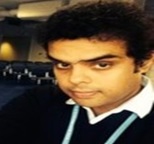
- Dr. Pradeep Rajagopalan ,
- Fccp, Frcp Mrcp (Respiratory) Uk Dtcd
- Consultant Respiratory And General Medicine With Elderly Care Maidstone And Tunbridgewells Nhs Trust,
- Tunbridgewells Hospital, Pembury, Tunbridge Wells, Kent.
- rpradeep75@yahoo.co.uk
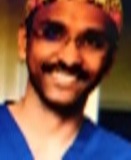
- Dr. Arun Kozhikunnath,
- FRCS (Ed) (Trauma and Orthopaedics)
- Fellow of European Board of Trauma & Orthopaedics MRCS(Ed), Foot & Ankle Fellow Brighton & Sussex University Hospitals NHS Trust,
- Eastern Road, Brighton, BN2 5BE
- rpradeep75@yahoo.co.uk
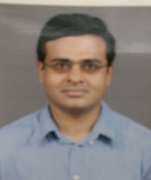
- Dr.Mohan Shanmugam, MBBS, MCAI, FRCA ,
- Ortho , Consultant In Anaesthesia & Perioperative Medicine,
- Manchester University, NHS Foundation Trust
- mohan.shanmugam@mft.nhs.uk
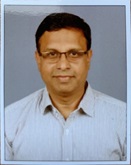
- Dr. Ravi Srinivasagopalan, MD, FCARCSI
- Anaesthesia & Pain consultant,
- Spire St. Anthonys Hospital Sutton, UK.
- giriravi64@yahoo.co.uk
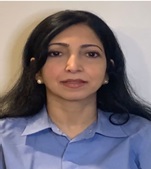
- Dr. Gazala Khan, MD.,
- OBG ,School of Medicine
- Wayne State University Detroit, MI
- gkhkan1@hfhs.org
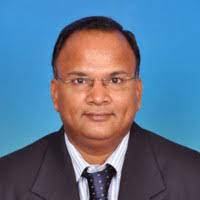
- Dr. Suresh Ponnusamy, MD (General Medicine), MRCP (UK)
- General Physician and Academician in Internal Medicine.
- Trust Registrar, Diabetes and Endocrine, Clinical Fellow Emergency Medicine, Peterborough City Hospital,
- drsuresh02md1@gmail.com
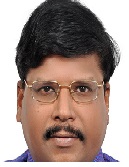
- Dr. Karthikeyan Gengaimuthu
- Professor of Paediatrics and Neonatology ( PAED ).
- Dubai Health Authority, Dubai United Arab Emirates
- karthikdubai.neo@gmail.com
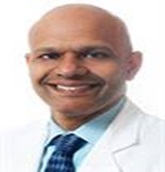
- Dr. Kanakasabai L. Narasimhan, MD., FACP, FACE,ECNU.,
- Board Certified in Endocrinologist , Diabetes and Metabolism ( ENDO CRINOLOGY )
- Diplomate of the American Board of Internal Medicine South Charlottee Endocrinology/Novant Health
- nsugar00@yahoo.com
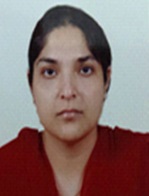
- Dr Tabinda Hasan, MBBS, MD, PHD, PGDHE(Harward University),MRCS(Royal College of Surgeons)
- Asso. Professor of Anatomy and Cell Biology Coordinator Second year Medicine Department Basic Medical Sciences College of Medicine
- Princess Nora Bint Abdulrahman University Riyadh, Kingdom of Saudi Arabia
- drtabindahasan@gmail.com / THASAN@pnu.edu.Sa

- Dr Balaji Punalvasal Duraisamy
- "GS given by Dr. Priyanka"
- Palliative Medicine Specialist Comprehensive Cancer Centre King Fahad Medical City Riyadh, Kingdom of Saudi Arabia
- drbalaji@gmail.com
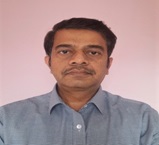
- Dr. M. Thangavelu,MS, DNB.,FRCS,FEBU,MRCS, M.Ch.,
- Consultant Urological Surgeon - "GS given by Dr. Sasi"
- Betsi Cadwaldar University health Board Ysbyty Gwynedd, Bangor, UK.
- drtmohan@gmail.com
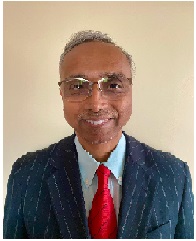
- Dr. Chittoor J. Rajaraman MBBS, MRCS, FRCS (Neurosurgery)
- "Neuro Surgery / GS"
- Hull University Teaching Hospitals NHS Trust Alderson House, Hull Royal Infirmary Anlab Road, Hull, Hu3 2JZ, UK.
- crajaraman@gmail.com
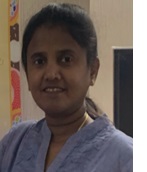
- Dr. Zebia Thomas, MBBS, DGO, MRCOG.,
- OBG - "GS given by Dr. Sasi"
- Baradford Royal Infirmary- General Hospital Bradford, UK
- zebiasanju@gmail.com
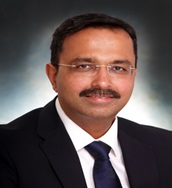
- Dr. Sanjay Lachhman Rajpal, MBBS,MS, DNB.,FRCS(Uro.)FEBU.,
- Consultant Urological Surgeon with Specialist Interest in Endourology - "GS - Dr. Sasi"
- Royal Hallamshire Hospital Honorary Senior Lecturer, Sheffield.
- sanjayrajpal@icloud.com
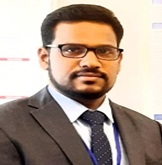
- Dr. Vetriselvan Subramaniyan., Ph.D
- Faculty of Medicine
- MAHSA University
- vetricology@gmail.com
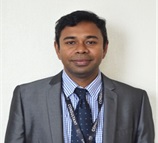
- Dr. Jai Manick
- Consultant ENT Lead ENT Head and Neck Surgery TASC Clinical Academic Research Fellow Teaching Lead head and neck Scotland Regional Surgical advisor
- Royal College of surgeons Edinburgh Ninewells, Medical School, University of Dundee, UK
- jai.manick@gmail.com
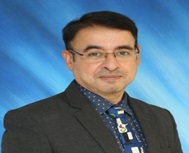
- Prof Dr. Srikumar,
- Director of Research, Innovation and Post graduate studies Department of Pathology
- Masha University Malaysia.
- activedoctor@gmail.com
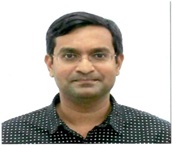
- Dr. Benson Chellakkan Selvanesan,
- Department of pathology Uniformed Services - PATHO
- University of the Health Sciences 4301, Jones Bridge road Room# B 3067, Bethesda, MD 20814, USA.
- benson.selvanesan.ctr@usuhs.edu
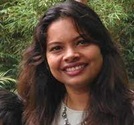
- Mrs. Suni Ebby
- Lecturer Anatomy
- Gulf Medical University,505, BSBQ Damascus street Qusais 1, Dubai
- -
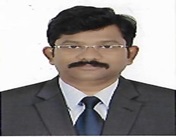
- Dr. Manoharan.R. MD
- Specialisit Dermatologist
- Aster Medical Cente, Tecom Dubai, UAE
- drmano7@yahoo.co.in
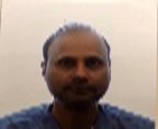
- Dr.Rajeev Kurapathi, MD, MBA
- Hospitalist and Director of Integative Oncology
- St. Elizabeth health care, KY USA American board of family Physicians & Lifestyle medicine
- drkrajeev@gmail.com

- Dr. Dinesh Babu
- Radiation Oncology
- Univ of Oklahoma Health science centre Oklahoma city, Oklahoma 73104.
- dsomasun@ouhsc.edu / dineshibms@gmail.com
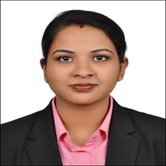
- Dr. Dikshitha K Chetty, MD (Anaesthesia), MBBS
- Anaesthesia
- Aster Hospital, Mankhool.
- dr.dikshitha@gmail.com
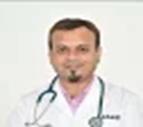
- Dr. Mohammad Azizur Rahman
- Professor of Respiratory Medicine & Medicine under faculty of Medicine
- haka University Dhaka, Bangladesh
- Mohammadrahmandr@gmail.com
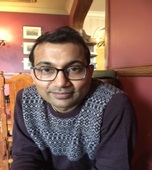
- Dr. Balasubramanian T. Srinivasan,MD, FRCP
- Consultant Physician and Endocrinologist Clinical Lead for Diabetes and Endocrinology
- United Lincolnshire hospitals NHS Trust Greetwell road, Lincoln
- Bala.Srinivasan@ulh.nhs.uk
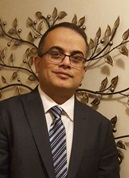
- Dr. Venkatesh Muthukrishnan,mrc., Psych., DPM, DGM.,
- Consultant Psychiatrist , Clinical Director
- HY & Y MHSOP services 26, Kingsdale close/Yarm TS15 9UQ
- vmuthukjrishnan1@nhs.net
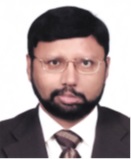
- Dr.K R Shankar, MBBS, FRCPsych (UK), CCT (UK), DPM, DIP, FIPS.
- Medical Director MHSU & Department Head - Psychiatry
- Psychiatry Administration Richmond Hospital Room 2006, Green Zone 7000 Westminster Hwy Richmond, BC V6X 1A2
- Ashok.krishnamoorthy@vch.ca
.HarendraNathSarker.jpg)
- Prof(Dr).HarendraNathSarker,MBBS,FCPS, MRCP(UK),MRCP(Neurology),FRCP(Edin),FRCP (Glasgow)
- Professor and Head of the department Medicine,
- Monowara Sikder Medical College, Sariyatpur,Bangladesh.
- hnsarker@gmail.com
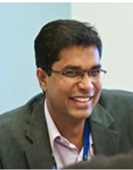
- Dr Karthik Thangavelu
- Consultant Psychiatrist & Lead Consultant (City LMHTs)
- Redwood 1 ward , Highbury Hospital City East LMHT Lavender House , Porchester Road Nottingham NG3 6LF
- karthik.thangavelu@nottshc.nhs.uk
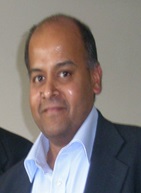
- Dr Hari Subramaniam , MSc, MD, DPM, DNB FRC Psych
- Diploma Mental Health Law ,Consultant Psychiatrist for the Elderly
- Leicestershire Partnership NHS Foundation Trust
- hari.subramaniam@leicspart.nhs.uk / hari.subramaniam@nhs.net / hs338@le.ac.uk
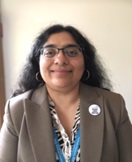
- Dr. Ananta Dave, MBBS, MD,DNB FRCPsych, MMedEth,
- School of Medicine , Consultant Child & Adolescent Psychiatrist "Consultant Honorary Asst.(Clinical) Professor"
- University of Nottingham
- Ananta.Dave@nhs.net
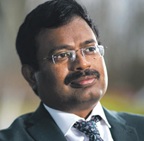
- Dr. Arun Prasad Chidambaram , MD, MRCP (Psych)
- Deputy Chief Medical Officer & Medical Director
- Lancashire & South Cumbria,NHS Foundation Trust
- Arun.chidambaram@Iscft.nhs.uk / adhavkrithi@gmail.com
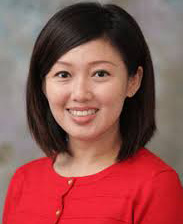
- Dr.Mok Pooi Ling
- Faculty of Medicine and Health Sciences
- Associate Professor - Department of Biomedical Sciences -
- University Putra Malaysia - Malaysia
- rachelmok2005@gmail.com
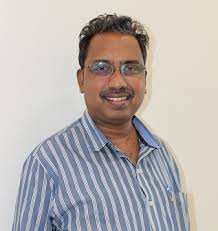
- Dr Parasuraman Padmanabhan
- Deputy Director (Translational Neuroscience)
- Head of Operation, Centre for Neuroimaging Research at NTU (CeNReN) Imaging Probe Development Platform (IPDP) Research Administration and Support Services (RASS) Lee Kong Chian School of Medicine Nanyang Technological University (NTU).
- 59 Nanyang Drive,Experimental Medicine Building (EMB),Level 7, Room: 07-19, Cognitive Neuroimaging Centre (CoNiC) Singapore- 636 921
- ppadmanabhan1@gmail.com or ppadmanabhan@ntu.edu.sg
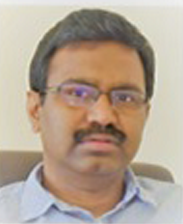
- Dr. SENTHILVELAN MANOHAR
- Research Scientist
- Research Scientist, Communicative Disorders and Sciences, Centre for Hearing and Deafness, State University of New York at Buffalo
- smanohar@buffalo.edu
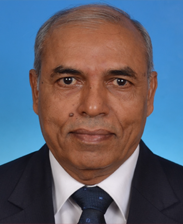
- Dr GNANDEV PHUTANE
- Associate Professor
- School of Medicine Faculty of Health & Medical Sciences, Taylor’s University
- Gnandev.Phutane@taylors.edu.my
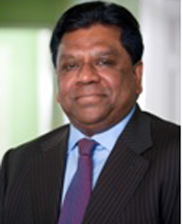
- Dr P. CHIDAMBARA THANU PILLAI (CT PILLAI)
- Consultant
- 71, Chelmsford Road, Shenfield, Essex CM15 8QP
- ct.pillai@btconnect.com

- Dr. TRILOCHAN HIREMAT
- Clinical Instructor
- 28 Southfield Avenue, Apt 351, Stamford, CT 06902, USA
- tri.hiremath@yale.edu
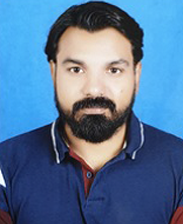
- Dr. A. FRANKLIN
- Associate Dean & Professor,
- Anna Medical College, San Souci Road, Montagne Blanch, Mauritius
- frankmikro@gmail.com
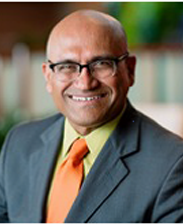
- Dr. AMIT K GHOSH
- Professor
- Mayo Clinic Rochester, 200 First St SW, Rochester, MN 55905-0001, 507-284-0443
- Ghosh.Amit@mayo.edu
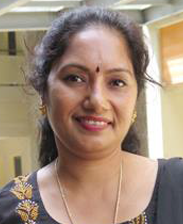
- Dr. AMUDHA KADIRVELU
- Associate Professor
- Jeffrey Cheah School of Medicine and Health Sciences Monash University Malaysia
- amudha.kadirvelu@monash.edu
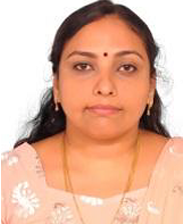
- Dr. B. BUVANA
- Associate Professor
- Sultan Qaboos University, Sultanate of Oman
- buvana_08@yahoo.co.in / anatbuvana@gmail.com
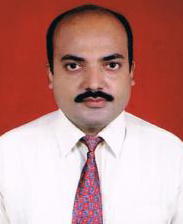
- Dr. BRAJESH KUMAR JHA
- Associate Professor
- Department of Microbiology, College of Medical Sciences Teaching Hospital. Bharatpur, Nepal
- baiju010@gmail.com
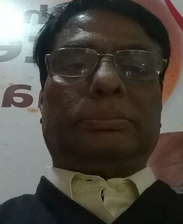
- Dr. D. SULTAN SHERIFF
- Professor
- Anna Medical College, Mauritius
- drdsheriff@gmail.com
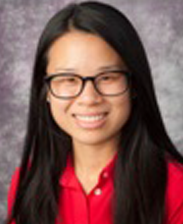
- Dr. ELAINE CHIANG
- Assistant Professor
- 6709 McPherson Blvd #2, Pittsburgh, PA 15208, (508) 360-6977
- echiang03@gmail.com
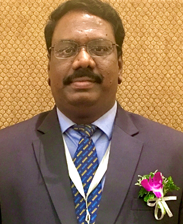
- Dr. G. PADMANABHA KUMAR
- Professor
- Head of the Department Dept of Oral and Maxillofacial Surgery, Faculty of Dentistry,MAHSA University.
- padmanabha@mahsa.edu.my
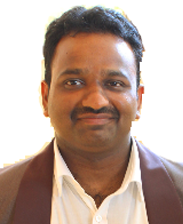
- Dr. JAGADEESH ANBAZHAGAN
- Specialist
- Amana Health Care, Altowayyah, Alain, Abudhabi, United Arab Emirates
- jagadeesh02@gmail.com
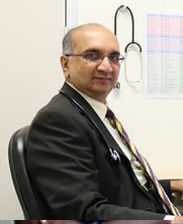
- Dr. JAGADISH SHIVALINGAPPA
- Consultant
- Department of Nephrology and Renal Transplantation, Fiona Stanley Hospital, 11, Robin Warren Drive, Murdoch, 6150. Western Australia, Australia
- Jagadish.Jamboti@health.wa.gov.au / drjagadishjamboti@gmail.com
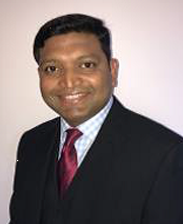
- Dr. JEFFRIN ANTHONY
- Clinical Director
- BMI The Meriden Hospital, Walsgrave Hospital Site, Clifford Bridge Road, Coventry, CV2 2LQ, West Midlands, England.
- Jeffrin.anthony@gmail.com
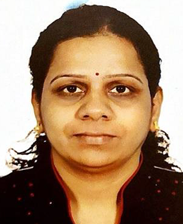
- Dr. KAVITHA GANESH
- Professor
- Chair & Professor of Anatomy, Princess Noura Bint Abdul Rehman university Riyadh, Saudi Arabia.
- drkavigg@gmail.com / kganesa@pnu.edu.sa
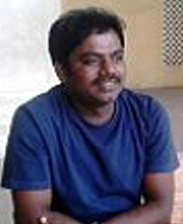
- Dr. KOTAPATI KASI VISWANATH
- Research Professor
- Graduate Institute of Biotechnology National Chung Hsing University Taichung City., Taiwan (R.O.C)
- viswanathkotapati@gmail.com
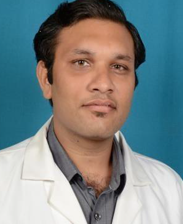
- Dr. KRISHAN YADAV
- Clinical Fellow
- Neonatal Perinatal Medicine, Division of Neonatology, Department of Pediatrics BC Children Hospital, University of British Columbia, Vancouver, BC, Canada
- dr.krishanyadav@gmail.com / krishan.yadav@cw.bc.ca
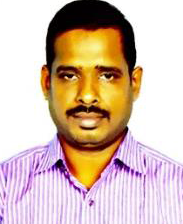
- Dr. MOHAMED ISMAIL BASHA
- Professor
- Anna Medical College, San Souci Road, Montagne Blanch, Mauritius
- bmi_bmi68@yahoo.com
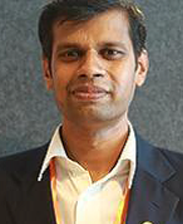
- Dr. PARASURAMAN SUBRAMANI
- Associate Professor
- Unit Head, Unit of Pharmacology, Faculty of Pharmacy, AIMST University, 08100 Bedong, Kedah Darul Aman, Malaysia.
- parasuraman@aimst.edu.my / parasuphd@gmail.com
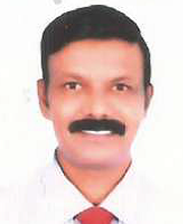
- Dr. PAUL SIMON
- Prosthodontist
- Armed forces hospital Southern region, Khamis Mushayt, Kingdom of Saudi Arabia.
- drpaulsimonmds@gmail.com
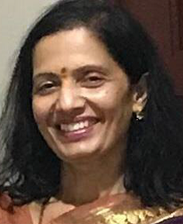
- Dr. SAROJINI JAGADISH
- Senior Consultant
- Australian & NZ College of Anaesthetists, Senior Clinical Lecturer, University of Western Australia
- drjsarojini@yahoo.com
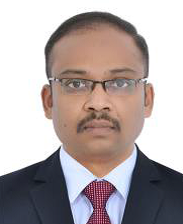
- Dr. V. MANIKANDASAMY
- Specialist
- Al Joun Street, Mussafah, Abu Dhabi, United Arab Emirates
- bharathi4samy@gmail.com
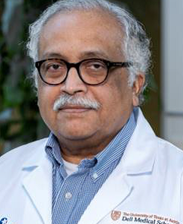
- Dr. VEDANARAYANAN
- Professor
- Professor of Neurology, Dell Medical School, University of Texas at Austin. Attending Neurologist and Chief of Neuromuscular Medicine Dell Children’s Medical Center Austin, Texas
- vvedanarayanan@hotmail.com
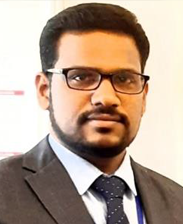
- Dr. VETRISELVAN SUBRAMANIYAN
- Associate Professor
- School of Medicine, MAHSA University, MALAYSIA
- drvetriselvan@mahsa.edu.my
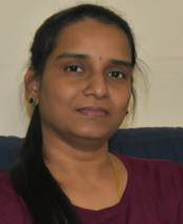
- Dr. VIJAYA MURUGAIYAN
- Research Scientist
- Jacobs School of Medicine and Biomedical Sciences, Dept. of Biochemistry, Buffalo, New York 14203.
- vijayamu@buffalo.edu
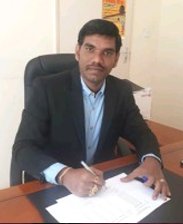
- Prof. D.SATHEESH KUMAR, PhD.,
- Professor
- Lusaka Apex Medical University, Zambia.
- satheesh.cology@gmail.com
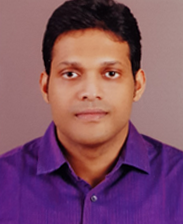
- SAJIN JOSE DEVARAJ
- Research Scientist
- Dept. of Emergencies in Adult and Pediatrics, Speciality Registrar Emergency Medicine London Northwest HealthCare NHS Trust, Harrow,London , Middlesex, Manage Medical and surgical
- sajinnick@gmail.com
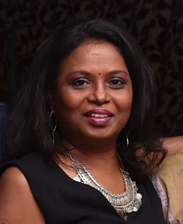
- UMA DEVI M PALANISAMY
- Associate Professor
- Monash University (Malaysia) · Jeffrey Cheah School of Medicine and Health Sciences
- umadevi.palanisamy@monash.edu
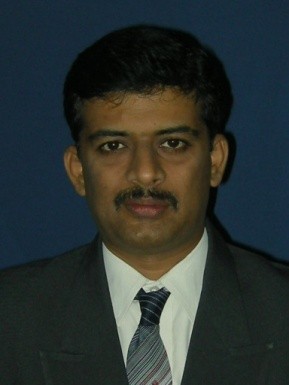
- Dr.ESWAR NAGARAJ,M.D.S.,
- SPECIALITY PRACTIONER FORMER PROFESSOR & HEAD DEPARTMENT OF ORAL MEDICINE& RADIOLOGY
- SRM DENTAL COLLEGE & HOSPITAL CHENNAI.
- priyaeswars@hotmail.com
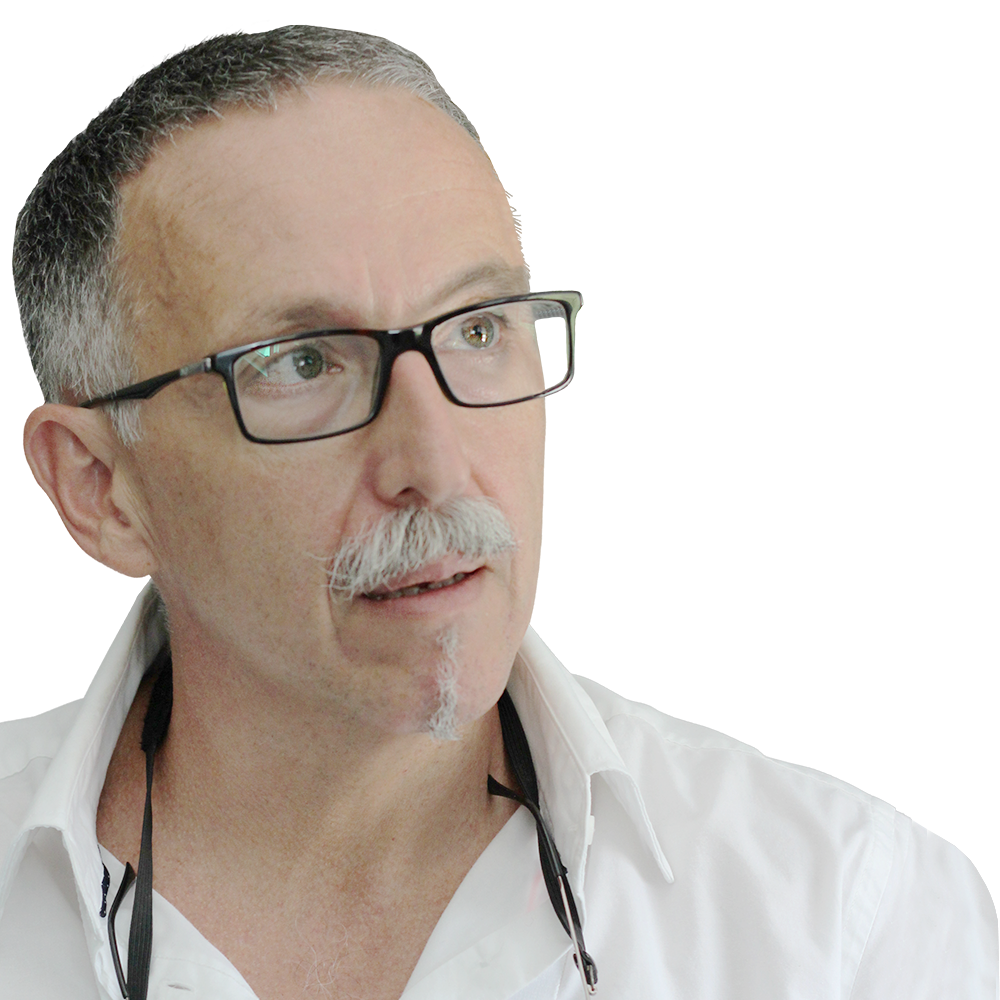
- Prof. Goran Tošić , PhD MSc DDS
- Professor of Endodontics
- Consultant of Global Dentisty, NIS, Serbia
- Department of Restorative Dentistry, Gulf Medical University, Ajman, United Arab Emirates
- Odiseys2000@yahoo.com
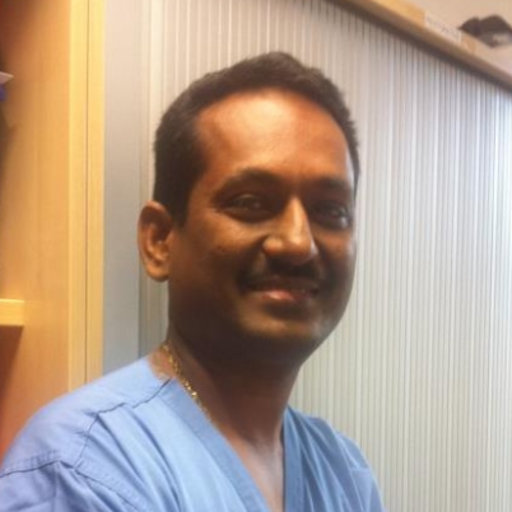
- Dr.Kandasamy Ganesan - BDS, MDS (OMFS), MFDS RCS(ENG), FFD RCS(IRE)
- Consultant Oral Surgeon
- Department of Oral & Maxillofacial Surgery,
- Southend University Hospital, NHS Foundation Trust
- kandasamy.ganesan@southend.nhs.uk
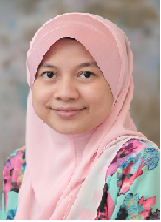
- Assoc. Prof. Dr. Wan Aliaa Wan Sulaiman
- Associate professor
- Department of Neurology,
- Faculty of Medicine and Health Sciences, University Putra Malaysia
- wanaliaa@upm.edu.my / drwanaliaa@gmail.com
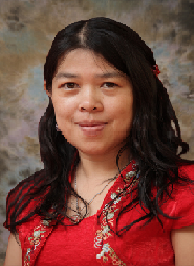
- Professor Dr Ching Siew Mooi
- Associate professor
- Department of Family Medicine and Health Science,
- Faculty of Medicine and Health Science, Universiti Putra Malaysia
- sm_ching@upm.edu.my
BIHER
MD - Physiology :
- PEOs
- POs
- PSOs
- Curriculum Syllabus
- Student Strength
Programme Educational Objectives – (PEOs)
-
PEO 1: Knowledge :
-
At the end of first year, a graduating student should:
1. Be able to comprehend the structure, functions, and connections of the nervous system to analyse the integrative and regulative functions of organs and organ systems and should be able to localize the site of lesions according to deficits.
2. Have knowledge of basic principles of embryology and stages involved in the development of the organs and organ systems from the time of conception till birth so as to compre- hend the developmental basis of occurrence of major variations, abnormalities and con- genital anomalies.
3. Recognize the critical stages of normal human development and the effects of common teratogens, genetic mutations and environmental hazards on the same.
4. Comprehend the basic principles of genetic inheritance, karyotyping genetic counselling and have basic knowledge of common genetic syndromes.
5. Have knowledge of the anatomical basis of common clinical procedures like injections, bi- opsies and diagnostic/interventionalprocedures.
6. Comprehend the sacredness of human body donation, follow bioethical principles and ac- cord the cadaver the dignity and respect deserved.
7. Understand the principles of handling bio hazardous materials and policy of biomedical waste disposal.
8. Be aware asto how to handle a light microscope proficiently
-
At the end of first year, a graduating student should:
-
PEO 2: Skills :
-
At the end of the course the student shall be able to:
1. Localize pulsations of important arteries and also structures against which pressure can be applied in case of bleeding from a particular artery.
2. To elicit superficial and deep reflexes, muscle power, and movements of joints.
3. To locate the site of lumbar puncture, sternal puncture, pericardial tapping, liver biopsy etc.
4. To locate veins for venipuncture.
5. To locate sites for emergency tracheostomy.
-
At the end of the course the student shall be able to:
-
PEO 3: Integration :
- Through horizontal integration with other basic sciences departments, the students should be able to comprehend the regulation and integration of functions of the organs and systems in the hu- man body and through vertical integration with various clinical departments, interpret the anatomi- cal basis of disease processes.
Programme Outcomes – (POs)
-
PO 1:
Possess comprehensive knowledge of the normal functions of all organ systems of the body.
-
PO 2:
Possess an understanding of the physiological basis of health and disease.
-
PO 3:
Understanding of the basic biophysical principles involved in functioning of body organs in normal and diseased conditions
-
PO 4:
Ability to explain the normal functioning of all organ systems in human body and its alterations in diseased state, correlating the same with classical clinical features and outline the basic principles of management.
-
PO 5:
Ability to perform detailed clinical examination of each system in a systematic manner and interpret the findings.
-
PO 6:
Ability to perform all basic haematology laboratory tests and interpret the results and outline the possible causes for the abnormal results.
-
PO 7:
Demonstrate highr level critical thinking skills and applying aquired knowledge in solving problems
-
PO 8:
Ability to ask correct research questions and design and conduct research work and publish
Programme Specific Outcomes – (PSOs)
Curriculum Syllabus
Student Strength
| Bhaarath Medical College & Hospital | |
|---|---|
| Academic Year | Student Admitted |
| Sree Balaji Medical College and Hospital | |
|---|---|
| Academic Year | Student Admitted |
| Sri Lakshmi Narayana Institute of Medical Science Medical College & Hospital | |
|---|---|
| Academic Year | Student Admitted |
BIHER
MD - Anatomy :
- PEOs
- POs
- PSOs
- Curriculum Syllabus
- Student Strength
Programme Educational Objectives – (PEOs)
-
PEO1: Knowledge:
- Comprehend normal disposition, interrelationships, functional and cross sectional anatomy of the various structures macroscopically.
- Identify the basic tissues and organs of the body microscopically and correlate their structure with functions in normal and diseased states.
- Interpret the basic principles and sequential development of organs and systems, recognize the critical stages of development and effects of the common teratogens, genetic mutations and environment hazards.
- Comprehend the need for research in order to aid and abet basic medical sciences.
-
PEO2: Skills:
- Identify and locate all the structures of the body and the topography of the living anatomy.
- Identify the organs and tissues microscopically.
- Identify and interpret normal karyograms, abnormal karyograms and clinical features of common genetic disorders.
- Identify the critical stages of embryonic development and interpret the effects of common teratogens, genetic mutations and environmental hazards on development.
- Understand the clinical basis of some important procedures like lumbar puncture, pleural tap, liver biopsy, drainage of abscesses etc., and impart knowledge on these aspects in teaching-learning activities of the department.
- Interpret the sectional anatomy of the human body and identify various structures which are commonly diseased, on x- ray plates, ultrasound, CT and MRI plates.
Programme Outcomes – (POs)
-
PO1:
To be a competent specialist, teacher and researcher. At the end of the programme he should have mastered most of the competencies pertaining to the speciality and developed a scientific temperament oriented to principles of research methodology.
-
PO2:
Develop the ability to integrate Anatomy with other specialities.
-
PO3:
. Develop skills as a goal directed trainer , recognizing continuing educational needs and practicing the speciality ethically.
-
PO4:
Develop management skills to function as a team leader in teaching and research.
-
PO5:
Develop effective communication skills with students,parents and colleagues.
Programme Specific Outcomes – (PSOs)
-
PSO1:
Competency in all subdivions of anatomy , its applied aspects and recent advances.
-
PSO2:
Demonstrate the ability to correlate clinical conditions and their anatomical basis .
-
PSO3:
Chalk lesson plans and apply different methods of teaching and learning anatomy should be able to draw up assessment, and develop competence in evaluation techniques.
-
PSO4:
Acquire competency to dissect the entire body.
-
PSO5:
Develop skills in all types of embalming.
-
PSO6:
Be competent to prepare and stain slides.
-
PSO7:
Should acquire skills to curate a museum.
-
PSO8:
Acquire basic skills in research methods, accessing scientific, database, information technology, thesis protocol, review of literature, execution and preparation of report.
-
PSO9:
Should know how to carry out documentation.
-
PSO10:
Should have developed organizational skills to conduct symposia and group discussions.
-
PSO11:
Must have a reasonable knowledge of bio-waste management and infection control.
-
PSO12:
Identify socio-economic environmental and overall health of the student community and acquire capacity of not letting personal beliefs and limitations come in the way of duty
Curriculum Syllabus
Student Strength
| Bhaarath Medical College & Hospital | |
|---|---|
| Academic Year | Student Admitted |
| Sree Balaji Medical College and Hospital | |
|---|---|
| Academic Year | Student Admitted |
| Sri Lakshmi Narayana Institute of Medical Science Medical College & Hospital | |
|---|---|
| Academic Year | Student Admitted |
BIHER
MD - DVL ( Dermatology ) :
- PEOs
- POs
- PSOs
- Curriculum Syllabus
- Student Strength
Programme Educational Objectives – (PEOs)
-
PEO 1: Knowledge :
-
At the end of first year, a graduating student should:
1. Be able to comprehend the structure, functions, and connections of the nervous system to analyse the integrative and regulative functions of organs and organ systems and should be able to localize the site of lesions according to deficits.
2. Have knowledge of basic principles of embryology and stages involved in the development of the organs and organ systems from the time of conception till birth so as to compre- hend the developmental basis of occurrence of major variations, abnormalities and con- genital anomalies.
3. Recognize the critical stages of normal human development and the effects of common teratogens, genetic mutations and environmental hazards on the same.
4. Comprehend the basic principles of genetic inheritance, karyotyping genetic counselling and have basic knowledge of common genetic syndromes.
5. Have knowledge of the anatomical basis of common clinical procedures like injections, bi- opsies and diagnostic/interventionalprocedures.
6. Comprehend the sacredness of human body donation, follow bioethical principles and ac- cord the cadaver the dignity and respect deserved.
7. Understand the principles of handling bio hazardous materials and policy of biomedical waste disposal.
8. Be aware asto how to handle a light microscope proficiently
-
At the end of first year, a graduating student should:
-
PEO 2: Skills :
-
At the end of the course the student shall be able to:
1. Localize pulsations of important arteries and also structures against which pressure can be applied in case of bleeding from a particular artery.
2. To elicit superficial and deep reflexes, muscle power, and movements of joints.
3. To locate the site of lumbar puncture, sternal puncture, pericardial tapping, liver biopsy etc.
4. To locate veins for venipuncture.
5. To locate sites for emergency tracheostomy.
-
At the end of the course the student shall be able to:
-
PEO 3: Integration :
- Through horizontal integration with other basic sciences departments, the students should be able to comprehend the regulation and integration of functions of the organs and systems in the hu- man body and through vertical integration with various clinical departments, interpret the anatomi- cal basis of disease processes.
Programme Outcomes – (POs)
-
PO 1:
General medical skills as learnt in MBBS to be maintained.
-
PO 2:
Identify social, economic, environmental, biological and emotional determinants of patients, and institute diagnostic, therapeutic, rehabilitative, preventive and promotive measures to provide holistic care to patients at individual and community level against skin, venereal disease and leprosy.
-
PO 3:
Recognize the emotional and behavioral characteristics of patients and keep these fundamental attributes in focus while dealing with them
-
PO 4:
Demonstrate empathy and humane approach towards patients and their families and respect their sensibilities, with colleagues, and interact with the patient and the clinician or other colleagues to provide the best possible diagnosis or opinion
-
PO 5:
Should be able to function as a part of a team, develop an attitude of cooperation
-
PO 6:
Recognize conditions that may be outside the area of his specialty/competence• and refer them to the proper specialist
Programme Specific Outcomes – (PSOs)
-
PSO 1:
Be able to identify ,classify and differenatiate cutaneous findings in dermatological terms in a systematic way.
-
PSO 2:
Provide quality patients care-Diagnosis,Treatment of diseases related to skin
-
PSO 3:
Teach the medical paramedical students in the specialities
-
PSO 4:
Be able to perform systemic examination (chest, cardiac, abdomen, neurological, genitals, oral, eye and gynaecological examination) relevant to dermatologic condition.
-
PSO 5:
Be competent to manage dermatologic emergencies like angioedema, toxic epidermal necrolysis (TEN), Stevens-Johnson syndrome (SJS), pemphigus, drug reaction and necrotic erythema nodosum leprosum (ENL).
-
PSO 6:
Be able to plan and deliver comprehensive treatment for diseases using principles of rational drug therapy.
-
PSO 7:
Be able to plan and advice measures for the prevention of infectious disease..
-
PSO 8:
Be able to plan rehabilitation of patient suffering from chronic illness and disability and those with special needs like leprosy.
Curriculum Syllabus
Student Strength
| Bhaarath Medical College & Hospital | |
|---|---|
| Academic Year | Student Admitted |
| Sree Balaji Medical College and Hospital | |
|---|---|
| Academic Year | Student Admitted |
| Sri Lakshmi Narayana Institute of Medical Science Medical College & Hospital | |
|---|---|
| Academic Year | Student Admitted |
BIHER
MD - Radiodiognosis :
- PEOs
- POs
- PSOs
- Curriculum Syllabus
- Student Strength
Programme Educational Objectives – (PEOs)
-
PEO 1: Knowledge :
-
At the end of first year, a graduating student should:
1. Be able to comprehend the structure, functions, and connections of the nervous system to analyse the integrative and regulative functions of organs and organ systems and should be able to localize the site of lesions according to deficits.
2. Have knowledge of basic principles of embryology and stages involved in the development of the organs and organ systems from the time of conception till birth so as to compre- hend the developmental basis of occurrence of major variations, abnormalities and con- genital anomalies.
3. Recognize the critical stages of normal human development and the effects of common teratogens, genetic mutations and environmental hazards on the same.
4. Comprehend the basic principles of genetic inheritance, karyotyping genetic counselling and have basic knowledge of common genetic syndromes.
5. Have knowledge of the anatomical basis of common clinical procedures like injections, bi- opsies and diagnostic/interventionalprocedures.
6. Comprehend the sacredness of human body donation, follow bioethical principles and ac- cord the cadaver the dignity and respect deserved.
7. Understand the principles of handling bio hazardous materials and policy of biomedical waste disposal.
8. Be aware asto how to handle a light microscope proficiently
-
At the end of first year, a graduating student should:
-
PEO 2: Skills :
-
The candidate at the end of training should be able to do the following:
1. Independently perform and interpret routine radiography and ultrasound/doppler studies.
2. Independantly perform and interpret radiological special investigations pertaining to the GI tract, urogenital tract, sinograms, fistulograms etc.
3. Independently interpret routine spiral CT ,MDCT and MRI studies.
4. Perform conventional catheter aortograms, visceral and cerebral angiograms under supervision. Assist simple angioplasty and embolisation procedures.
5. Perform simple guided interventions like biopsies, aspirations and catheter drainage of abscesses.
6. Independantly interpret relevant imaging in acute emergencies and trauma and understand the medico legal aspects.
7. Derive a cost effective algorithm of various imaging techniques in a given problem setting.
8. Develop the capacity and motivation for continued self-learning.
9.Use the PACS effectively to enhance workflow efficiency.
-
The candidate at the end of training should be able to do the following:
-
PEO 3: Integration :
- Through horizontal integration with other basic sciences departments, the students should be able to comprehend the regulation and integration of functions of the organs and systems in the hu- man body and through vertical integration with various clinical departments, interpret the anatomi- cal basis of disease processes.
Programme Outcomes – (POs)
-
PO 1:
To train physicians in the specialty of diagnostic radiology and make them capable of providing safe, appropriate and effective imaging services to the nation and community.
-
PO 2:
Provide a graduated, supervised clinical experience in interpreting and performing all studies that are encompassed by the specialty of diagnostic radiology..
-
PO 3:
Provide a committed faculty dedicated to educating and stimulating young physicians to achieve excellence in their clinical practices.
-
PO 4:
Provide the opportunity to participate in teaching and research in all aspects of radiology.
-
PO 5:
Provide an integrated approach to patient care by working closely with other specialties and professional health care providers.
-
PO 6:
Provide exposure to the expanded realm of medical practice to encompass such areas as medical ethics, medical law, total quality management, quality assurance, and professionalism.
-
PO 7: Patient Care:
Residents must be able to provide patient care that is compassionate, appropriate and effective for the diagnosis and treatment of disease and the promotion of health..
-
PO 8: Medical Knowledge:
Residents must demonstrate knowledge of established sciences as well as the application of this knowledge to patient care.
-
PO 9: Practice Based Learning and Improvement:
Residents must demonstrate the ability to investigate and evaluate their care of patients, to appraise and assimilate scientific evidence and to continuously improve patient care based on constant self-evaluation and lifelong learning.
-
PO 10: Professionalism:
Residents must demonstrate a commitment to carrying out professional responsibilities and an adherence to ethical principles.
-
PO 11: Interpersonal and Communication:
SkillsResidents must demonstrate interpersonal and communication skills that result in the effective exchange of information. Residents must team up with patients, their families and professional associates in order to provide excellent patient care.
-
PO 12: Systems Based Practice:
Residents must demonstrate an awareness of, and responsiveness to, the larger context and system of health care, as well as the ability to call effectively on other resources in the system to provide optimal health care.
Programme Specific Outcomes – (PSOs)
-
PSO 1:
Be an able consultant to clinicians. To be able to suggest appropriate diagnoses, follow-up or diagnostic work-up.
-
PSO 2:
Provide good patient care by making sure that the proper exams are ordered by clinicians in order to answer a clinical question.
-
PSO 3:
Advise pregnant patients regarding risks of radiation and obtain informed consent from the patient prior to performing any study with ionizing radiation. Advise patient or referring clinician of alternative imaging studies.
-
PSO 4:
Integrate all learning opportunities, conferences and learning materials available to the residents in order to optimize knowledge and ultimately patient care..
-
PSO 5:
Screen patients who are at risk for contrast reaction.
-
PSO 6:
Provide emergency treatment for adverse reactions to IV contrast.
-
PSO 7:
Produce independent, concise, accurate, timely reports for basic radiological investigations. Prepare reports of advanced imaging like MDCT and MR with supervision.
-
PSO 8:
Utilize PACS and available information sources to manage patient information.
Curriculum Syllabus
Student Strength
| Bhaarath Medical College & Hospital | |
|---|---|
| Academic Year | Student Admitted |
| Sree Balaji Medical College and Hospital | |
|---|---|
| Academic Year | Student Admitted |
| Sri Lakshmi Narayana Institute of Medical Science Medical College & Hospital | |
|---|---|
| Academic Year | Student Admitted |
BIHER
MD - Anaesthesology :
- PEOs
- POs
- PSOs
- Curriculum Syllabus
- Student Strength
Programme Educational Objectives – (PEOs)
-
PEO 1: Objectives:
- Knowledge (Cognitive domain) .
- Skills (Psychomotor domain)
- Attitudes communication skills, human values and ethical practive At the end of the training the candidate must be able to:
The following objectives are laid out to achieve the goals of the course. These objectives have to be achieved by the candidates by the time of completion of the course. The objectives may be considered under the following headings.
-
PEO 2: Knowledge:
- Demonstrate understanding of basic sciences relevant to anaesthesia.
- Describe the anaesthetic management of common and uncommon surgical ailments belonging to various branches of surgery, at all ages requiring operative interventions with a basic knowledge of the aetiology, Pathophysiology and the surgical treatment of the conditions.
- Describe the underlying theoretical background of mechanism pain perception and pain management.
- Describe the theory of underlying aetiology, mechanism and management of the conditions requiring resuscitation.
- Recognise the conditions that may be outside the areas of his compet4ence and refer them to an appropriate specialist prior to anaesthetising them .
- Advise regarding the anaesthetic management of any surgical case and to carry on this management effectively.
- Update himself/herself by self-study and by attending courses, conferences and seminars relevant to anaesthesia.
- Teach and guide his team colleagues and students.
- Demonstrate understanding of medicolegal aspects of anaesthesia.
- Undertake audit, use information technology tools and carryout research, both basic and clinical with the aim of publishing the work and presenting the same at various scientific fora.
-
PEO 3: Skills:
- Perform ‘Pre-Anaesthetic Evaluation’ of patients undergoing surgery by taking proper clinical history, examining the patients, ordering relevant investigations and interpreting them to have additional information about the surgical condition, and the associated medical condition which warrant the modification of the proposed anaesthetic management
- Administer anaesthesia (general and or regional) to common surgical operations independently and to super specialisations like cardiac surgery, neurosurgery etc with the help of a senior anaesthesiologist.
- Provide Basic Life Support (BLS) and Advanced Cardiac Life Support (ACLS).
- Manage airway and perform ventilatory care etc. of unconscious and polytrauma cases by a member of trauma team and critical care unit team.
- Undertake complete patient monitoring including preoperative ventilatory care of the patients .
- Perform acute and chronic pain management.
-
PEO 3: Attitudes and Communication Abilities:
- Adopt ethical principles in all aspects of his anaesthetic practice. Professional honesty and integrity are to be fostered. Anaesthesia care is to be delivered to all in need, irrespective of the social status, caste, creed or religion of the patient
- Develop communication skills, in particular the skill to explain the various options available in the anaesthetic management, critical care, pain management and to obtain a true informed consent from the patient.
- Provide leadership in the operating room environment and get best out of the team in a congenital working atmosphere .
- Apply high moral and ethical standards while carrying out human or animal research.
- Be humble and accept the limitations in his knowledge and skill and to ask for help from colleagues when needed .
- Respect patient’s rights and privileges including right to information and right to seek a second opinion.
Programme Outcomes – (POs)
-
PO 1:
Competence to practice independently the art and science of Anaesthesiology and Resuscitation effectively and ethically, backed by scientific knowledge and skill base.
-
PO 2:
The competence to undertake responsibilities in critical care unit, trauma unit, and respiratory therapy unit of unconscious patients requiring ventilatory support.
-
PO 3:
The competence to undertake acute and chronic pain management.
-
PO 4:
Attitude to continue professional development irrespective of whether he is in a teaching institution or in private anaesthetic practice.
-
PO 5:
The ability to be a dedicated, motivated teacher who is always keen to train or to share his knowledge and skills with a colleague or junior or any learner.
Programme Specific Outcomes – (PSOs)
-
PSO 1:
Knowledge of the anaesthetic management of common and uncommon surgical ailments belonging to various branches of surgery, at all ages requiring operative interventions with a basic knowledge of the aetiology, Pathophysiology and the surgical treatment of the conditions .
-
PSO 2:
Ability to perform ‘Pre-Anaesthetic Evaluation’ of patients undergoing surgery by taking proper clinical history, examining the patients, ordering relevant investigations and interpreting them to have additional information about the surgical condition and the associated medical condition which warrant the modification of the proposed anaesthetic management.
-
PSO 3:
Competence to administer anaesthesia (general and or regional) to common surgical operations independently and to super specialisations like cardiac surgery, neurosurgery etc with the help of a senior anaesthesiologist.
-
PSO 4:
Knowledge of the underlying theoretical background of mechanism pain perception and pain management.
-
PSO 5:
Knowledge of the theory of underlying aetiology, mechanism and management of the conditions requiring resuscitation.
-
PSO 6:
Manage airway and perform ventilatory care etc. of unconscious and polytrauma cases by a member of trauma team and critical care unit team.
-
PSO 7:
Competence to advise regarding the anaesthetic management of any surgical case and to carry on this management effectively.
-
PSO 8:
Undertake complete patient monitoring including preoperative ventilatory care of the patients .
-
PSO 9:
Perform acute and chronic pain management .
-
PSO 10:
Knowledge regarding the medicolegal aspects of anaesthesia .
-
PSO 11:
Undertake audit, use information technology tools and carryout research, both basic and clinical with the aim of publishing the work and presenting the same at various scientific for a .
-
PSO 12:
Respect patient’s rights and privileges including right to information and right to seek a second opinion.
Curriculum Syllabus
Student Strength
| Bhaarath Medical College & Hospital | |
|---|---|
| Academic Year | Student Admitted |
| Sree Balaji Medical College and Hospital | |
|---|---|
| Academic Year | Student Admitted |
| Sri Lakshmi Narayana Institute of Medical Science Medical College & Hospital | |
|---|---|
| Academic Year | Student Admitted |
BIHER
MD - Obstetrics and Gynaecology :
- PEOs
- POs
- PSOs
- Curriculum Syllabus
- Student Strength
Programme Educational Objectives – (PEOs)
-
PEO 1: Knowledge :
-
At the end of first year, a graduating student should:
1. Be able to comprehend the structure, functions, and connections of the nervous system to analyse the integrative and regulative functions of organs and organ systems and should be able to localize the site of lesions according to deficits.
2. Have knowledge of basic principles of embryology and stages involved in the development of the organs and organ systems from the time of conception till birth so as to compre- hend the developmental basis of occurrence of major variations, abnormalities and con- genital anomalies.
3. Recognize the critical stages of normal human development and the effects of common teratogens, genetic mutations and environmental hazards on the same.
4. Comprehend the basic principles of genetic inheritance, karyotyping genetic counselling and have basic knowledge of common genetic syndromes.
5. Have knowledge of the anatomical basis of common clinical procedures like injections, bi- opsies and diagnostic/interventionalprocedures.
6. Comprehend the sacredness of human body donation, follow bioethical principles and ac- cord the cadaver the dignity and respect deserved.
7. Understand the principles of handling bio hazardous materials and policy of biomedical waste disposal.
8. Be aware asto how to handle a light microscope proficiently
-
At the end of first year, a graduating student should:
-
PEO 2: Skills :
-
At the end of the course the student shall be able to:
1. Localize pulsations of important arteries and also structures against which pressure can be applied in case of bleeding from a particular artery.
2. To elicit superficial and deep reflexes, muscle power, and movements of joints.
3. To locate the site of lumbar puncture, sternal puncture, pericardial tapping, liver biopsy etc.
4. To locate veins for venipuncture.
5. To locate sites for emergency tracheostomy.
-
At the end of the course the student shall be able to:
-
PEO 3: Integration :
- Through horizontal integration with other basic sciences departments, the students should be able to comprehend the regulation and integration of functions of the organs and systems in the hu- man body and through vertical integration with various clinical departments, interpret the anatomi- cal basis of disease processes.
Programme Outcomes – (POs)
-
PO 1: MEDICAL KNOWLEDGE :
Acquisition of theoritical knowledge regarding the basic sciences (anatomy, Physiology, Pathology, Pharmacology) pertaining to reproductive system.
-
PO 2: EFFICIENT DIAGNOSTICIAN:
Differentiate physiological & pathological states pertaining to reproductive system.
-
PO 3: SKILL ACQUISITION :
Elicit views of others, mediate disagreements and help reach conclusions in group settings.
-
PO 4: STANDARDISED CARE:
Offering Standard, Ethical & unbiased patient care.
-
PO 5: MASTERLY PERFORMANCE:
Prenatal Diagnosis & managing "High risk" pregnancies.
-
PO 6: INDIVIDUALISED APPROACH:
Providing Individualised family planning methods (Contraception, sterilisation) in par with the legal systems pertaining in the country.
-
PO 7: MODERN DAY LEARNING :
Updation of the knowledge regarding ongoing advances in management of disease conditions &inqusitiveness in research materials.
-
PO 8: LIFE LONG LEARNING :
Participation in Workshops / Conferences / research activities
-
PO 9: EPIDEMIOLOGIST :
Screening for communicable / non-communicable disease status in the population & educating regarding awareness of gynec cancers
-
PO 10: COMPETANT CLINICIAN :
Diagnosing and managing common paediatric/ adolescent / geriatric gynaecologic problems
-
PO 11: ETHICAL & EMPATHETIC PRACTIONER :
Ethical practice in managing Infertility / Gynecological malignancies
-
PO 12: HEALTH PROGRAMMES :
Awareness of National health policies, state helth policies, scientific committee & bodies related to Obstetrics & gynecology
Programme Specific Outcomes – (PSOs)
-
PSO 1:
Acquiring skills & scientific knowledge in Obstetric & gynecological care
-
PSO 2:
Performing procedures & interventions abiding to standard protocols &practises.
-
PSO 3:
Participation in research activities.
Curriculum Syllabus
Student Strength
| Bhaarath Medical College & Hospital | |
|---|---|
| Academic Year | Student Admitted |
| Bhaarath Medical College & Hospital | |
|---|---|
| Academic Year | Student Admitted |
| Sree Balaji Medical College and Hospital | |
|---|---|
| Academic Year | Student Admitted |
| Sri Lakshmi Narayana Institute of Medical Science Medical College & Hospital | |
|---|---|
| Academic Year | Student Admitted |
BIHER
MD - Paediatrics :
- PEOs
- POs
- PSOs
- Curriculum Syllabus
- Student Strength
Programme Educational Objectives – (PEOs)
-
PEO 1: Knowledge :
-
At the end of first year, a graduating student should:
1. Be able to comprehend the structure, functions, and connections of the nervous system to analyse the integrative and regulative functions of organs and organ systems and should be able to localize the site of lesions according to deficits.
2. Have knowledge of basic principles of embryology and stages involved in the development of the organs and organ systems from the time of conception till birth so as to compre- hend the developmental basis of occurrence of major variations, abnormalities and con- genital anomalies.
3. Recognize the critical stages of normal human development and the effects of common teratogens, genetic mutations and environmental hazards on the same.
4. Comprehend the basic principles of genetic inheritance, karyotyping genetic counselling and have basic knowledge of common genetic syndromes.
5. Have knowledge of the anatomical basis of common clinical procedures like injections, bi- opsies and diagnostic/interventionalprocedures.
6. Comprehend the sacredness of human body donation, follow bioethical principles and ac- cord the cadaver the dignity and respect deserved.
7. Understand the principles of handling bio hazardous materials and policy of biomedical waste disposal.
8. Be aware asto how to handle a light microscope proficiently
-
At the end of first year, a graduating student should:
-
PEO 2: Skills :
-
At the end of the course the student shall be able to:
1. Elicit an appropriate clinical history.
2. Demonstrate appropriate clinical physical examination skills on children.
3. Plan ,decide up on and interpret appropriate cost effective investigations.
4. Perform essentil procedures both diagnostic and therapeutic.
5. Manage.resuscitate and stabilize children in pediatric or Neonatal emergencies.
-
At the end of the course the student shall be able to:
-
PEO 3: Communication and Attitudes :
- At the end of the course the student shall be able to:
1. Communicate appropriately with guardians and children,assisting in their health care decision making.
2. Practice child health care at the highest ethical level,protecting the child at all costs.
3. Respect parent’s (and their guardian’s) rights and professional relation ships( Doctor- Doctor,Doctor-Nurse,Doctor –Patient,Doctor-Society ).
- At the end of the course the student shall be able to:
Programme Outcomes – (POs)
-
PO 1:
Competence to work as a specialist/ Medical teacher who shall recognize the health needs of the community, and perform the professional obligations ethically and in keeping with the objectives of the national health policy.
-
PO 2:
Competence to work as a specialist/ Medical teacher at the secondary and tertiary levels of health care providing system.
-
PO 3:
Competence to work as a specialist/ Medical teacher who shall be aware of the contemporary advance and developments in peditrics concerened.
-
PO4:
Competence to work as a specialist/ Medical teacher who shll have acquired spirit of scientific enquiry and is oriented to the principles of research methodology.
-
PO5:
Competence to work as a specialist/ Medical teacher who shall have acquired the basic skills in teaching of medical and para medical students.
Programme Specific Outcomes – (PSOs)
-
PSO 1:
Ability to recognize the importance of the concerned speciality in the context of the health needs of the community and the national priorities in the health sector.
-
PSO 2:
Ability to practice the speciality ethically and in step with the principles of primary health care.
-
PSO 3:
Ability to demonstrate sufficient understanding of the basic sciences relevant to pediatrics
-
PSO 4:
Competence to elicit an appropriate clinical history.
-
PSO 5:
Ability to identify social ,economic,environmental,biological and emotional determinants of health in a given case and take them in to account.
-
PSO 6:
Skill to diagnose and manage the conditions in pediatrics on the basis of clinical assessment, physical examination and appropriately selected and conducted investigations.
-
PSO 7:
Skill in performing essential procedures, both diagnositic and therapeutic.
-
PSO 8:
Competence to plan and advise measures for the prevention and rehabilitation of children suffering from diseases and disability related .
-
PSO 9:
Skill in managing, resuscitating and stabilizing children in pediatric or Neonatal emergencies.
-
PSO 10:
Demonstrate skills in documentation of individual case details as well as morbidity and mortality rate relevant.
-
PSO 11:
Play the assigned role in the implementation of national health programme effectively and responsibly.
Curriculum Syllabus
Student Strength
| Bhaarath Medical College & Hospital | |
|---|---|
| Academic Year | Student Admitted |
| Bhaarath Medical College & Hospital | |
|---|---|
| Academic Year | Student Admitted |
| Sree Balaji Medical College and Hospital | |
|---|---|
| Academic Year | Student Admitted |
| Sri Lakshmi Narayana Institute of Medical Science Medical College & Hospital | |
|---|---|
| Academic Year | Student Admitted |
BIHER
MD - TB and Chest Disease :
- PEOs
- POs
- PSOs
- Curriculum Syllabus
- Student Strength
Programme Educational Objectives – (PEOs)
-
PEO 1: Knowledge :
-
At the end of first year, a graduating student should:
1. Be able to comprehend the structure, functions, and connections of the nervous system to analyse the integrative and regulative functions of organs and organ systems and should be able to localize the site of lesions according to deficits.
2. Have knowledge of basic principles of embryology and stages involved in the development of the organs and organ systems from the time of conception till birth so as to compre- hend the developmental basis of occurrence of major variations, abnormalities and con- genital anomalies.
3. Recognize the critical stages of normal human development and the effects of common teratogens, genetic mutations and environmental hazards on the same.
4. Comprehend the basic principles of genetic inheritance, karyotyping genetic counselling and have basic knowledge of common genetic syndromes.
5. Have knowledge of the anatomical basis of common clinical procedures like injections, bi- opsies and diagnostic/interventionalprocedures.
6. Comprehend the sacredness of human body donation, follow bioethical principles and ac- cord the cadaver the dignity and respect deserved.
7. Understand the principles of handling bio hazardous materials and policy of biomedical waste disposal.
8. Be aware asto how to handle a light microscope proficiently
-
At the end of first year, a graduating student should:
-
PEO 2: Skills :
-
At the end of the course the student shall be able to:
1. Localize pulsations of important arteries and also structures against which pressure can be applied in case of bleeding from a particular artery.
2. To elicit superficial and deep reflexes, muscle power, and movements of joints.
3. To locate the site of lumbar puncture, sternal puncture, pericardial tapping, liver biopsy etc.
4. To locate veins for venipuncture.
5. To locate sites for emergency tracheostomy.
-
At the end of the course the student shall be able to:
-
PEO 3: Integration :
- Through horizontal integration with other basic sciences departments, the students should be able to comprehend the regulation and integration of functions of the organs and systems in the hu- man body and through vertical integration with various clinical departments, interpret the anatomi- cal basis of disease processes.
Programme Outcomes – (POs)
-
PO 1:
Recognize the importance of pulmonary and critical care in the context of the health needs of the community and the national priorities in the health sector.
-
PO 2:
Practice pulmonary and critical care ethically and in accordance with the principles of primary health care.
-
PO 3:
Demonstrate sufficient understanding of basic sciences in pulmonary and Critical Care Medicine appropriate to the level of postgraduate training.
-
PO 4:
Identify social, economical, environmental, biological and emotional determinants of health in a given case, and take them into account while planning therapeutic, rehabilitative, preventive and promotive measures/ strategies.
-
PO 5:
Diagnose and manage pulmonary and critical care disease on the basis of clinical assessment, and appropriately selected and conducted investigations.
-
PO 6:
Plan and advice measures for the prevention and rehabilitation of patients suffering from respiratory diseases and disability.
-
PO 7:
Demonstrate empathy and humane approach towards patients and their families and exhibit interpersonal behavior in accordance with the societal norms and expectations.
-
PO 8:
Play the assigned role in the implementation of National Tuberculosis and other health programmes effectively and responsibility.
-
PO 9:
Organize and supervise the chosen/ assigned health care services demonstrating adequate managerial skills in the field situation.
-
PO 10:
Effectively communicate with patients or relatives so as to educate them sufficiently and give them the full benefit of informed consent to treatment and ensure compliance.
-
PO 11:
Effectively communicate with colleagues.
Programme Specific Outcomes – (PSOs)
-
PSO 1:
Take a proper clinical history, examine the patient, perform essential diagnostic procedures , order relevant tests and interpret the results to come to a reasonable diagnosis about the surgical condition.
-
PSO 2:
Perform procedures like Lymph node FNAC, Biopsy, Pleurocenthesis, ICD, Pleural Biopsy, Medical Pleurodesis, Lung Biopsy, Pig tail catheterization, ICD insertion, Intubations etc.
-
PSO 3:
Provide basic and advanced life saving support services (BLS & ALS) in emergency situations
-
PSO 4:
Perform daily Out patient services including patient screening and disease determination.
-
PSO 5:
Monitoring patients in ward and in ICUs.
-
PSO 6:
Preoperative evaluation for fitness for surgical procedures.
-
PSO 7:
Describe aetiology, pathophysiology, principles of diagnosis and management of common respiratory problems including emergencies, in adults.
-
PSO 8:
Participate in community out reach activities like camps, school screening and public education.
-
PSO 9:
Participate in department research activities.
-
PSO 10:
Prescribe medications for various ailments and follow up patients to understand outcomes.
-
PSO 11:
Present original research article in state conference/National/international conference.
-
PSO 12:
To do thesis work in the field of respiratory medicine under guidance of senior faculty.
-
PSO 13:
Teach junior post graduates, undergraduates and respiratory therapy students about respiratory medicne.
Curriculum Syllabus
Student Strength
| Bhaarath Medical College & Hospital | |
|---|---|
| Academic Year | Student Admitted |
| Sree Balaji Medical College and Hospital | |
|---|---|
| Academic Year | Student Admitted |
| Sri Lakshmi Narayana Institute of Medical Science Medical College & Hospital | |
|---|---|
| Academic Year | Student Admitted |
BIHER
MD - Psychiatry :
- PEOs
- POs
- PSOs
- Curriculum Syllabus
- Student Strength
Programme Educational Objectives – (PEOs)
-
PEO 1: Knowledge :
-
At the end of first year, a graduating student should:
1. Be able to comprehend the structure, functions, and connections of the nervous system to analyse the integrative and regulative functions of organs and organ systems and should be able to localize the site of lesions according to deficits.
2. Have knowledge of basic principles of embryology and stages involved in the development of the organs and organ systems from the time of conception till birth so as to compre- hend the developmental basis of occurrence of major variations, abnormalities and con- genital anomalies.
3. Recognize the critical stages of normal human development and the effects of common teratogens, genetic mutations and environmental hazards on the same.
4. Comprehend the basic principles of genetic inheritance, karyotyping genetic counselling and have basic knowledge of common genetic syndromes.
5. Have knowledge of the anatomical basis of common clinical procedures like injections, bi- opsies and diagnostic/interventionalprocedures.
6. Comprehend the sacredness of human body donation, follow bioethical principles and ac- cord the cadaver the dignity and respect deserved.
7. Understand the principles of handling bio hazardous materials and policy of biomedical waste disposal.
8. Be aware asto how to handle a light microscope proficiently
-
At the end of first year, a graduating student should:
-
PEO 2: Skills :
-
At the end of the course the student shall be able to:
1. Applying scientific thinking and evidence based approach.
2. Maintaining a critical and analytical perspective.
3. Demonstrating cultural sensitivity in clinical situations.
4. Establishing a therapeutic Doctor-Patient relationship.
5. Identifying significant problem/need of patient.
6. Collecting relevant information including personality and psychologic issues that results in a diagnostic formulation.
7. Formulating a comprehensive differential diagnoses including medical causes.
8. Writing a management plan taking iinto consideration safety and biopsychosocial aspects.
9. Appropriately documenting the decision making process and written justification for the professional judgment.
10. Communicating effectively with patients, relatives, colleagues and subordinates.
-
At the end of the course the student shall be able to:
-
PEO 3: Integration :
- Through horizontal integration with other basic sciences departments, the students should be able to comprehend the regulation and integration of functions of the organs and systems in the hu- man body and through vertical integration with various clinical departments, interpret the anatomi- cal basis of disease processes.
Programme Outcomes – (POs)
-
PO 1:
The candidates should be thoroughly familiar with basic and applied neuroanatomy, neurophysiology, sociology, neurochemistry, developmental and social psychology, Psychometry and Genetics
-
PO 2: General & Clinical Psychology :
The candidates are expected to have a sound knowledge of general psychological principles in areas such as personality, learning, intelligence, memory,emotions, perceptions etc.They are expected to learn the theory and practical aspects of clinicalpsychology like psychometric assessment and psychological methods of treatment.
-
PO 3: Clinical, child and adolescent Psychiatry :
The candidates should attain a high degree of clinical proficiency in history taking, conducting and reporting psychiatric examination, diagnosis and the treatment of the common psychiatric disorders.Residents should acquire sound knowledge of principles and practice of child and adolescent psychiatry including learning disability,mental retardation and other emotional and behavioral disorders.
-
PO 4: Psychopharmacology,Psychodynamics,Psychotherapies,Psychosomatic disorders,laison psychiatry and emergency psychiatry:
Residents should be thoroughly familiar with basic principles and should have sound knowledge of psychopharmacology and all aspects of psychopharmacological practice.They should also be familiar with theoretical framework and technique of psychoeducation,individual as well as group psycotherapy,behaviour therapy and should be able to conduct such therapies.They should understand and manage psychosomatic disorders and liaison psyciatry.Residents should also be aware of psychosocial aspects of medical and surgical disorders and psychiatry emergencies and their management.
-
PO 5: Psychodynamics & Psychotherapies:
Candidates should have a proper understanding of the various schools of psychodynamic thing and their applications to psychiatry. The should also become familiar with theoretical framework and techniques of Psychoeducation, individual as well as group psychotherapy, behaviour therapy and should be able to conduct such therapies.
-
PO 6: Psychosomatic Disorders & Liaison psychiatry:
The candidates should develop skills in understanding and managing psychosomatic disorders and liaison psychiatry. They should also be aware of the psychosocial aspects of various medical and surgical disorders.
-
PO 7: Emergency Psychiatry:
The candidate should become familiar with psychiatric emergencies and their management..
-
PO 8:
Applying scientific thinking and evidence based approach.
-
PO 9:
Sestablishing a therapeutic Doctor-Patient relationship
-
PO 10:
Identifying significant problem/need of patient.
-
PO 11:
Collecting relevant information including personality and psychologic issues that results in a diagnostic formulation
-
PO 12:
Formulating a comprehensive differential diagnoses including medical causes.
-
PO 13:
Appropriately documenting the decision making process and written justification for the professional judgment.
Programme Specific Outcomes – (PSOs)
-
PSO 1:
Able to apply scientific thinking and evidence based approach and to maintain critical and analytical perspective.
-
PSO 2:
Able to demonstrate cultural sensitivity in clinical situations and establish therapeutic patient-doctor relationship and identifying significant problem/need of patient
-
PSO 3:
Able to collect relevant information including personality and psychologic issues that results in a diagnostic formulation and thereby to formulate comprehensive differential diagnoses including medical causes .
-
PSO 4:
To write a management plan taking into consideration safety and biophysical aspects and appropriately documenting decision making process and written justification for professional judgement.
-
PSO 5: Psychodynamics & Psychotherapies:
To be able to communicate effectively with patients, relatives, colleagues and subordinates..
-
PSO 6: Statistics and Research Methodology:
The candidates should have basic skills in statistics and research methodology so as to successfully interpret/conduct research.
Curriculum Syllabus
Student Strength
| Bhaarath Medical College & Hospital | |
|---|---|
| Academic Year | Student Admitted |
| Sree Balaji Medical College and Hospital | |
|---|---|
| Academic Year | Student Admitted |
| Sri Lakshmi Narayana Institute of Medical Science Medical College & Hospital | |
|---|---|
| Academic Year | Student Admitted |
BIHER
MD - General Medicine :
- PEOs
- POs
- PSOs
- Curriculum Syllabus
- Student Strength
Programme Educational Objectives – (PEOs)
-
PEO 1: Knowledge :
-
At the end of first year, a graduating student should:
1. Be able to comprehend the structure, functions, and connections of the nervous system to analyse the integrative and regulative functions of organs and organ systems and should be able to localize the site of lesions according to deficits.
2. Have knowledge of basic principles of embryology and stages involved in the development of the organs and organ systems from the time of conception till birth so as to compre- hend the developmental basis of occurrence of major variations, abnormalities and con- genital anomalies.
3. Recognize the critical stages of normal human development and the effects of common teratogens, genetic mutations and environmental hazards on the same.
4. Comprehend the basic principles of genetic inheritance, karyotyping genetic counselling and have basic knowledge of common genetic syndromes.
5. Have knowledge of the anatomical basis of common clinical procedures like injections, bi- opsies and diagnostic/interventionalprocedures.
6. Comprehend the sacredness of human body donation, follow bioethical principles and ac- cord the cadaver the dignity and respect deserved.
7. Understand the principles of handling bio hazardous materials and policy of biomedical waste disposal.
8. Be aware asto how to handle a light microscope proficiently
-
At the end of first year, a graduating student should:
-
PEO 2: Skills :
-
At the end of the course the student shall be able to:
1. Localize pulsations of important arteries and also structures against which pressure can be applied in case of bleeding from a particular artery.
2. To elicit superficial and deep reflexes, muscle power, and movements of joints.
3. To locate the site of lumbar puncture, sternal puncture, pericardial tapping, liver biopsy etc.
4. To locate veins for venipuncture.
5. To locate sites for emergency tracheostomy.
-
At the end of the course the student shall be able to:
-
PEO 3: Integration :
- Through horizontal integration with other basic sciences departments, the students should be able to comprehend the regulation and integration of functions of the organs and systems in the hu- man body and through vertical integration with various clinical departments, interpret the anatomi- cal basis of disease processes.
Programme Outcomes – (POs)
-
PO 1:
Ability to apply critical thinking in identification of diseases.
-
PO 2:
Effective communication and developing rapport with the patients.
-
PO 3:
Social interaction and developing acceptance among the patients.
-
PO 4:
The ability to formulate cost effective and patient friendly treatment plans .
-
PO 5:
Ethics of medical practise towards patient and colleagues is learnt.
-
PO 6:
Competency to order judicious investigations for the patients.
-
PO 7:
Attitude to sustain self directed & life long learning.
-
PO 8:
Ability to identify social, economic, environmental, biological determinants of an adult and institute diagnostic, therapeutic, rehabilitative, preventive and promotive measures to provide holistic care.
Programme Specific Outcomes – (PSOs)
-
PSO 1:
Competency to collect detailed history, perform full physical examination and make proper clinical diagnosis. Perform relevant investigative and therapeutic procedures for the care of the patients interpret important imaging and laboratory results.
-
PSO 2:
Competency to diagnose illness based on the analysis of history, physical examination and confirm on further investigative work up. Plan and deliver comprehensive treatment using the principles of rational drug therapy.
-
PSO 3:
Competency to manage emergencies efficiently by providing BLS and ALS in emergency situations.
-
PSO 4:
Abilitty to document case details including epidemiological data.
-
PSO 5:
Ability to recognize conditions that may be outside the area of the specialty / competence and to refer them to an appropriate specialist.
-
PSO 6:
Respect patient’s rights and privileges including patients right to information and right to seek a second opinion. Demonstrate empathy and humane approach towards patients and their families and respect their sensibilities.
-
PSO 7:
Communication skills in explaining management and prognosis, providing counseling and giving health education messages to patients, families and communities
-
PSO 8:
Competence in basic concept of research methodology and epidemiology.
-
PSO 9:
Ability to facilitate learning of medical / nursing students, practicing physicians, paramedical health workers and other providers as a teacher – trainer.
Curriculum Syllabus
Student Strength
| Bhaarath Medical College & Hospital | |
|---|---|
| Academic Year | Student Admitted |
| Sree Balaji Medical College and Hospital | |
|---|---|
| Academic Year | Student Admitted |
| Sri Lakshmi Narayana Institute of Medical Science Medical College & Hospital | |
|---|---|
| Academic Year | Student Admitted |
BIHER
MD - Community Medicine :
- PEOs
- POs
- PSOs
- Curriculum Syllabus
- Student Strength
Programme Educational Objectives – (PEOs)
-
PEO1: Skill Development :
- 1. Able to apply the clinical skills to recognize and manage common health problems including their physical, emotional, social and economic aspects at the individual and family levels.
1.1 Able to manage / deal with medical emergencies at the community level.
1.2 Able to identify, plan and manage the health problems of the community he / she serves.
1.3 Able to organize health care of disasters and calamities including rehabilitation services.
1.4 Able to organize health care services for special groups like mothers, infants, under fives, school children, adolescent, handicapped children, geriatric and terminally ill.
1.5 To identify the health needs and demands of the community and prioritise the most important problems and help formulate and implement a plan of action and to manage them under National Health Programme guidelines
- 2. Aware of the national priorities and the goals to be achieved to implement primary health care.
2.1 Organise epidemiological research studies and should be able to design a study, collect data, analyze it with appropriate statistical technique and make a report.
2.2 Use effectively tools of epidemiology for understanding disease causation and determinants
2.3 Conduct epidemiological investigation of communicable and no communicable diseases and other health problems and suggest appropriate solutions.
2.4 To identify and formulate research questions and design and implement epidemiological and health system research studies.
2.5 To effectively communicate findings of the study to the experts and public.
2.6 Apply ethical principles in research.
2.7 To prepare and present scientific papers.
2.8 To acquire necessary computer skills to carry out the above work.
-
3.1 Aware of the health care delivery system and aware of the national priorities and goals to be achieved to implement public health care.
3.2 Manage health information system and respond timely to the information obtained.
3.3 Assess and find out economic need and identification of public health programmes.
3.4 Initiate, implement and supervise national health programmes.
3.5 Implementation of public health laws.
3.6 Plan human resources development.
3.7 Manage logistics and materials effectively.
3.8 Monitor and assure quality in programme implementation.
-
4.1 Aware of the health care delivery system and aware of the national priorities and goals to be achieved to implement public health care.
4.2 Able to plan and implement health education programmes.
4.3 Interact, communicate and educate effectively persons from diverse backgrounds to promote healthy behaviour through community participation.
-
5.1 To work as an effective member of the health team and as a team leader
5.2 Able to act as an effective teacher and trainer of community medicine.
5.3 Able to assess the learning needs of any given group.
5.4 Formulate learning objectives.
5.5 To plan curriculum and prepare curriculum material
5.6 To implement appropriate teaching methods and to evaluate learning experience
5.7 To develop pedagogic skills to handle undergraduates and orientation sessions for health functionaries at different levels.
- 1. Able to apply the clinical skills to recognize and manage common health problems including their physical, emotional, social and economic aspects at the individual and family levels.
Programme Outcomes – (POs)
-
PO 1:
Capability to function as a specialist in Community Medicine and Public Health.
-
PO 2:
Competency to hold high academic / managerial / or administrative positions in health systems in India and abroad .
-
PO 3:
The competency to provide consultancy services to National or International Organization on Public Health issues.
-
PO 4:
The ability to scientifically plan, execute and evaluate ongoing Public Health Programmes and Medical Education System.
Programme Specific Outcomes – (PSOs)
-
PSO 1:
Ability to identify important public health problems and approaches to solve them .
-
PSO 2:
Ability to practice modern techniques in epidemiology and research .
-
PSO 3:
The ability to apply management techniques in health.
-
PSO 4:
Ability to effectively communicate at individual, family and community using modern tools and techniques.
-
PSO 5:
Competency to function as an effective health team leader and trainer.
-
PSO 6:
Ability to apply the clinical skills to recognize and manage common health problems including their physical, emotional, social and economic aspects at the individual and family levels.
-
PSO 7:
Ability to manage / deal with medical emergencies at the community level.
-
PSO 8:
Ability to identify and manage the health problems of the community he / she serves.
-
PSO 9:
Ability to organize health care in disasters and calamities including rehabilitation services.
-
PSO 10:
Ability to organize health care services for special groups like mothers, infants, under fives, school children, adolescent, handicapped children, geriatric and terminally ill.
-
PSO 11:
Ability to identify the health needs and demands of the community and prioritise the most important problems and help formulate and implement a plan of action and to manage them under National Health Programme guidelines.
-
PSO 12:
The ability to use effectively tools of epidemiology for understanding disease causation and determinants.
-
PSO 13:
The ability to effectively communicate findings of the study to the experts and public.
-
PSO 14:
Knowledge of medical ethics and etiquette.
-
PSO 15:
Skills necessary computer skills to carry out the above work.
-
PSO 16:
The ability to work as an effective member of the health team and as a team leader .
-
PSO 17:
The competency to be an effective teacher and trainer of community medicine.
Curriculum Syllabus
Student Strength
| Bhaarath Medical College & Hospital | |
|---|---|
| Academic Year | Student Admitted |
| Sree Balaji Medical College and Hospital | |
|---|---|
| Academic Year | Student Admitted |
| Sri Lakshmi Narayana Institute of Medical Science Medical College & Hospital | |
|---|---|
| Academic Year | Student Admitted |
BIHER
MD - Microbiology :
- PEOs
- POs
- PSOs
- Curriculum Syllabus
- Student Strength
Programme Educational Objectives – (PEOs)
-
PEO1: Knowlede :
- At the end of the course the students shall be able to:
1. State and explain the clinical features, etiology, pathogenesis and methods of laboratory diagnosisof infectious diseases and apply that knowledge in the treatment, prevention and control of communicable diseases caused by micro-organisms.
2. State and explain the principles of immunity and immunological phenomenon which help tounderstand the pathogenesis, laboratory diagnosis of infectious and non-infectious diseases.
3. Establish and practice “laboratory medicine” for diagnosis of infectious diseases in hospitals and community in the field of bacteriology, parasitology, virology, mycology, serology and immunology inthe light of clinical findings.
4. Organize the prevention and control of communicable diseases in the community.
5. Understand and practice the principle of prevention and control of health care associated infections and rational antibiotic policy.
6. State the recent advances in the field of Medical Microbiology and apply this knowledgein understanding aetiopathogenesis and diagnosis of diseases caused by micro-organisms.
7. Carry out fundamental or applied research in the branches of medicine involving microbiologicalwork.
8. Develop specialization in any of the above subspecialities.
9. Undertake teaching assignments in the subject of medical Microbiology.
- At the end of the course the students shall be able to:
-
PEO1: Skills :
- At the end of the course the students shall be able to:
1. Plan the laboratory investigations for the diagnosis of infectious diseases.
2. Perform laboratory procedures to arrive at the etiological diagnosis of infectious diseases causedby bacteria, fungi, viruses and parasites including the drug sensitivity profile..
3. Perform and interpret immunological and serological tests.
4. Operate routine and sophisticated instruments in the laboratory.
5. Develop microteaching skills and Pedagogy.
6. Successfully implement the chosen research methodology.
- At the end of the course the students shall be able to:
Programme Outcomes – (POs)
-
PO 1:
To produce a competent specialist and medical teacher who recognises the health needs of the community.
-
PO 2:
To train postgraduates to carry out professional obligations ethically and in keeping withthe objectives of the national health policy.
-
PO 3:
To educate postgraduates so they are aware of contemporary advances in the field of medical and diagnostic microbiology.
-
PO 4:
To enable postgraduates to master the competencies pertaining to diagnostic Microbiologyas relevant to secondary ant tertiary levels of the health care system.
-
PO 5:
To foster the spirit of scientific enquiry and orient the trainee to the principles ofresearch methodology and epidemiology
-
PO 6:
To help trainees acquire the basic skills of teaching medical and paramedicalprofessionals .
-
PO 7:
To sensitise postgraduates to the importance of quality control in laboratory medicine.
-
PO 8:
To enable postgraduates to understand and implement the guidelines for hospital infectioncontrol.
-
PO 9:
To help the trainee understand the clinical, therapeutic and preventive aspects of infectious diseases of regional, national and global importance.
Programme Specific Outcomes – (PSOs)
-
PSO 1:
To enable the trainee to understand and explain the principles of immunology, etiopathogenesis, laboratory diagnosis and antimicrobial therapy of bacterial, viral, parasitic and fungal diseases.
-
PSO 2:
To involve the trainee in carrying out fundamental or applied research in one of these subspecialties in the form of a dissertation
-
PSO 3:
To educate postgraduates in the principles of prevention and control of healthcare associated infections and rational antibiotic policy.
-
PSO 4:
To make the postgraduate capable of establishing and practising laboratory medicine for the diagnosis of infectious diseases in the light of clinical findings
Curriculum Syllabus
Student Strength
| Bhaarath Medical College & Hospital | |
|---|---|
| Academic Year | Student Admitted |
| Sree Balaji Medical College and Hospital | |
|---|---|
| Academic Year | Student Admitted |
| Sri Lakshmi Narayana Institute of Medical Science Medical College & Hospital | |
|---|---|
| Academic Year | Student Admitted |
BIHER
MD - Pathology :
- PEOs
- POs
- PSOs
- Curriculum Syllabus
- Student Strength
Programme Educational Objectives – (PEOs)
-
PEO 1: Knowledge :
-
At the end of first year, a graduating student should:
1. Be able to comprehend the structure, functions, and connections of the nervous system to analyse the integrative and regulative functions of organs and organ systems and should be able to localize the site of lesions according to deficits.
2. Have knowledge of basic principles of embryology and stages involved in the development of the organs and organ systems from the time of conception till birth so as to compre- hend the developmental basis of occurrence of major variations, abnormalities and con- genital anomalies.
3. Recognize the critical stages of normal human development and the effects of common teratogens, genetic mutations and environmental hazards on the same.
4. Comprehend the basic principles of genetic inheritance, karyotyping genetic counselling and have basic knowledge of common genetic syndromes.
5. Have knowledge of the anatomical basis of common clinical procedures like injections, bi- opsies and diagnostic/interventionalprocedures.
6. Comprehend the sacredness of human body donation, follow bioethical principles and ac- cord the cadaver the dignity and respect deserved.
7. Understand the principles of handling bio hazardous materials and policy of biomedical waste disposal.
8. Be aware asto how to handle a light microscope proficiently
-
At the end of first year, a graduating student should:
-
PEO 2: Skills :
-
At the end of the course the student shall be able to:
1. Localize pulsations of important arteries and also structures against which pressure can be applied in case of bleeding from a particular artery.
2. To elicit superficial and deep reflexes, muscle power, and movements of joints.
3. To locate the site of lumbar puncture, sternal puncture, pericardial tapping, liver biopsy etc.
4. To locate veins for venipuncture.
5. To locate sites for emergency tracheostomy.
-
At the end of the course the student shall be able to:
-
PEO 3: Integration :
- Through horizontal integration with other basic sciences departments, the students should be able to comprehend the regulation and integration of functions of the organs and systems in the hu- man body and through vertical integration with various clinical departments, interpret the anatomi- cal basis of disease processes.
Programme Outcomes – (POs)
-
PO 1:
Recognize the health needs of the community and carry out professional obligation ethically and in keeping with the objectives of the national health policy.
-
PO 2:
Master most of the competencies, retaining to the specialty, that are required to be practiced at the secondary and tertiary levels of the healthcare delivery system.
-
PO 3:
Be aware of contemporary advances and developments in the discipline concerned.
-
PO 4:
Acquire a spirit of scientific inquiry and oriented to the principles of research methodology epidemiology.
-
PO 5:
Acquire the basic skills in teaching of the medical and paramedical professionals.
Programme Specific Outcomes – (PSOs)
-
PSO 1:
Understand and explain about the factors in causation of disease.
-
PSO 2:
Understand processes involved in the gross and microscopic changes of organs and tissues and explain these changes.
-
PSO 3:
Understand and explain the basis of evolution of clinical signs and symptoms.
-
PSO 4:
Should be able to perform procedures designated for laboratory detection of diseases.
-
PSO 5:
Should be able to process and accurately interpret the representative materials obtained from the patients in order to arrive at a correct diagnosis.
-
PSO 6:
Should be able to recognize and report morphological changes in cells, tissues and organs.
-
PSO 7:
Should be able to plan, perform and report specific research projects.
-
PSO 8:
Should be able to perform clinical autopsy and present CPC (Clinico Pathological Correlation)
Curriculum Syllabus
Student Strength
| Bhaarath Medical College & Hospital | |
|---|---|
| Academic Year | Student Admitted |
| Sree Balaji Medical College and Hospital | |
|---|---|
| Academic Year | Student Admitted |
| Sri Lakshmi Narayana Institute of Medical Science Medical College & Hospital | |
|---|---|
| Academic Year | Student Admitted |
BIHER
DM - Nurology :
- PEOs
- POs
- PSOs
- Curriculum Syllabus
- Student Strength
Programme Educational Objectives – (PEOs)
-
PEO 1:
Should be well acquired with the current literature on relevant aspects of the basic, investigative, clinical and operative neurosciences.
-
PEO 2:
Should have learned indications and performance skills of common neurosurgical operations.
-
PEO 3:
Should have acquired performance skills and ability to interpret relevant clinical investigations.
-
PEO 4:
Should be able to diagnose, plan investigations and treat common conditions in the speciality by relevant current therapeutic methods.
-
PEO 5:
Should be acquainted with allied and general clinical disciplines to ensure appropriate and timely referral.
-
PEO 6:
Should be capable of imparting basic neurosurgical training.
-
PEO 7:
Should be able to identify, frame and carry out research proposals in the relevant speciality.
Programme Outcomes – (POs)
-
PO 1:
Board understanding of the principles of Neurology necessary in the practice of the subject in the community.
-
PO 2:
Competence in intensive care with practical knowledge of working with resuscitative and monitoring equipments.
-
PO 3:
Ability to critically appraise published literature, interpret data and to broaden his/her knowledge by keeping abreast with modern developments in Neurology.
Programme Specific Outcomes – (PSOs)
-
PSO 1:
Ability and skills to perform and interpret investigative procedures related to the specialty
-
PSO 2:
Skills in the clinical diagnosis, planning of investigations and manage common conditions in the specialty by relevant current therapeutic methods.
-
PSO 3:
Capabilities to take independent decisions in emergency situations, perform required procedures in Neurology and manage complications.
-
PSO 4:
Ability to search online, use information technology to his/her advantage and critically evaluate medical literature and draw his/her own conclusion.
-
PSO 5:
Ability to teach Post graduates, undergraduate and nursing students in the basic management of the diseases in Neurology.
-
PSO 6:
Familiarity with allied and general clinical disciplines to ensure appropriate and timely referral.
-
PSO 7:
Ability to conduct research.
-
PSO 8:
Ability to become a consultant and capability of organizing specialty Departments.
Curriculum Syllabus
Student Strength
| Bhaarath Medical College & Hospital | |
|---|---|
| Academic Year | Student Admitted |
| Sree Balaji Medical College and Hospital | |
|---|---|
| Academic Year | Student Admitted |
| Sri Lakshmi Narayana Institute of Medical Science Medical College & Hospital | |
|---|---|
| Academic Year | Student Admitted |
| Academic Year | Student Admitted |
|---|---|
Faculty Profile
Full -Time :
| S.No | Name of the Faculty | Designation | Department | View PDF |
|---|---|---|---|---|
| 1 | Dr.Jayalakshmi | Professor & Dean | Microbiology | Click Here |
| 2 | Dr.Vishwanath R Hiremath | Professor & HOD | Anaesthesia | Click Here |
| 3 | Dr.Sitalal Narayan Rathod | HOD | FM | Click Here |
| 4 | Dr.K.Balagurunathan | HOD | General Surgery | Click Here |
| 5 | Dr.Balaganesh | Professor | Anaesthesia | Click Here |
| 6 | Dr.M.Kalasree | Professor | Anaesthesia | Click Here |
| 7 | Dr.N.Sivaraj | Professor | Anaesthesia | Click Here |
| 8 | Dr.S.Nithianandam | Professor | Anaesthesia | Click Here |
| 9 | Dr.Anju Balaji More | Professor | Anatomy | Click Here |
| 10 | Dr.Reena Agarwal | Professor | Anatomy | Click Here |
| 11 | Dr.Doddi Doramma Naidu | Professor | Biochemistry | Click Here |
| 12 | Dr.M.Jansrani | Professor | Biochemistry | Click Here |
| 13 | Dr.Prabhakar_Reddy | Professor | Biochemistry | Click Here |
| 14 | Dr.Barathalakshmi.J | Professor | Community Medicine | Click Here |
| 15 | Dr.Indradevi.R | Professor | Dermatology | Click Here |
| 16 | Dr.Geetha Krishnan Siddapur | Professor | ENT | Click Here |
| 17 | Dr.R.Venkataramanan | Professor | ENT | Click Here |
| 18 | Dr.Ajit Prakashchandra Malani | Professor | FM | Click Here |
| 19 | Dr.Asma Kausar | Professor | FM | Click Here |
| 20 | Dr.Raja.S | Professor | General Medicine | Click Here |
| 21 | Dr.siva.P.K | Professor | General Medicine | Click Here |
| 22 | Dr.Suresh Saravanakumar.S | Professor | General Medicine | Click Here |
| 23 | Dr.Asayas Bosco | Professor | General Surgery | Click Here |
| 24 | Dr.M.Senthilvelan | Professor | General Surgery | Click Here |
| 25 | Dr.Mourougayan | Professor | General Surgery | Click Here |
| 26 | Dr.R.Vijayan | Professor | General Surgery | Click Here |
| 27 | Dr.s.Kalivathinam | Professor | General Surgery | Click Here |
| 28 | Dr.S.Rajasekaran | Professor | General Surgery | Click Here |
| 29 | Dr.V.Radhakrishnan | Professor | General Surgery | Click Here |
| 30 | Dr.Kalarani.E | Professor | OBG | Click Here |
| 31 | Dr.Kalpana Thalava | professor | OBG | Click Here |
| 32 | Dr.Manimekalai.V | Professor | OBG | Click Here |
| 33 | Dr.P.Amutha | Professor | OBG | Click Here |
| 34 | Dr.Thamaraiselvi.B | Professor | OBG | Click Here |
| 35 | Dr.G.Parvin Sambandam | Professor | Ophthal | Click Here |
| 36 | Dr.Lakshmipathi veenki | Professor | Ophthal | Click Here |
| 37 | Dr.Karupaiya | Professor | Orthopedics | Click Here |
| 38 | Dr.Sathiesh | Professor | Orthopedics | Click Here |
| 39 | Dr.Pammy Sinha | Professor | Pathology | Click Here |
| 40 | Dr.Partho Protim Barman | Professor | Pathology | Click Here |
| 41 | Dr.Maheswari | Professor | Pediatrics | Click Here |
| 42 | Dr.Murali Krishanan.P | Professor | Pediatrics | Click Here |
| 43 | Dr.Sivaprakasam | Professor | Pediatrics | Click Here |
| 44 | Dr.Somasundaram | Professor | Pharmacology | Click Here |
| 45 | Dr.Henri Balraj | Professor | Physiology | Click Here |
| 46 | Dr.Meena | Professor | Physiology | Click Here |
| 47 | Dr.Vijayakumar | Professor | Physiology | Click Here |
| 48 | Dr.Arun Seetharaman | Professor | Psychiatry | Click Here |
| 49 | Dr.Pratap Kumar | Professor | Radiology | Click Here |
| 50 | Dr.Vidhya Shankar | Professor | Radiology | Click Here |
| 51 | Dr.Bhome Arvind Bapurao | Professor | TB & Chest | Click Here |
| 52 | Dr.Kathi Rajasekar | Professor | TB & Chest | Click Here |
| 53 | Dr.suriya Narayanan Behera | Professor | TB & Chest | Click Here |
| 54 | Dr.A.B.Prasanth | Associate Professor | Anaesthesia | Click Here |
| 55 | Dr.Chakravarthy Vakati | Associate Professor | Anaesthesia | Click Here |
| 56 | Dr.K.Gopalakrishnan.K | Associate Professor | Anaesthesia | Click Here |
| 57 | Dr.K.sanmugapriya | Associate Professor | Anaesthesia | Click Here |
| 58 | Dr.Nagalingam.N | Associate Professor | Anaesthesia | Click Here |
| 59 | Dr.S.Susheetha | Associate Professor | Anaesthesia | Click Here |
| 60 | Dr.B.Buvana | Associate Professor | Anatomy | Click Here |
| 61 | Dr.B.Rajesh | Associate Professor | Anatomy | Click Here |
| 62 | Dr.Vijisha Phalgunan | Associate Professor | Anatomy | Click Here |
| 63 | Dr.K.Baskaran | Associate Professor | Biochemistry | Click Here |
| 64 | Dr.K.Piruthivirajan | Associate Professor | Biochemistry | Click Here |
| 65 | Dr.M.Kajalakshmy | Associate Professor | Biochemistry | Click Here |
| 66 | Dr.Madhavi Kandregula | Associate Professor | Biochemistry | Click Here |
| 67 | Dr.C.Kameshwell | Associate Professor | Community Medicine | Click Here |
| 68 | Dr.S.Kanimozhi | Associate Professor | Community Medicine | Click Here |
| 69 | Dr.S.Rajini | Associate Professor | Community Medicine | Click Here |
| 70 | Dr.Thiruselvakumar.D | Associate Professor | Community Medicine | Click Here |
| 71 | Dr.Amudhavalli .V | Associate Professor | Dental | Click Here |
| 72 | Dr.Balaji Subramanian | Associate Professor | Dental | Click Here |
| 73 | Dr.Abarna | Associate Professor | Dermatology | Click Here |
| 74 | Dr.Bhuvanaratchagan | Associate Professor | Dermatology | Click Here |
| 75 | Dr.Prakash Sajja | Associate Professor | Dermatology | Click Here |
| 76 | Dr.R.Dhandapani | Associate Professor | Dermatology | Click Here |
| 77 | Dr .C.Aravind | Associate Professor | General Medicine | Click Here |
| 78 | Dr.Anil Kumar Muthineni | Associate Professor | General Medicine | Click Here |
| 79 | Dr.Ashwath.S.V | Associate Professor | General Medicine | Click Here |
| 80 | dr.Praveen Kumar Etta | Associate Professor | General Medicine | Click Here |
| 81 | Dr.Rajini.s | Associate Professor | General Medicine | Click Here |
| 82 | Dr.Tarun Kesava Naidu | Associate Professor | General Medicine | Click Here |
| 83 | Dr.AC.Natarajan | Associate Professor | General Surgery | Click Here |
| 84 | Dr.Durga Prasad Bendapudi | Associate Professor | General Surgery | Click Here |
| 85 | Dr.G.Prabhu | Associate Professor | General Surgery | Click Here |
| 86 | Dr.Srihari Dasamandam | Associate Professor | General Surgery | Click Here |
| 87 | Dr.Venkateswarlu_Chetty | Associate Professor | General Surgery | Click Here |
| 88 | Dr.Jayapradha.S | Associate Professor | Microbiology | Click Here |
| 89 | Dr.Naveen_Kumar | Associate Professor | Microbiology | Click Here |
| 90 | Dr.Pradha | Associate Professor | Microbiology | Click Here |
| 91 | Dr.Aishwariya Jagan | Associate Professor | OBG | Click Here |
| 92 | Dr.Durga.K | Associate Professor | OBG | Click Here |
| 93 | Dr.Neranjana.P | Associate Professor | OBG | Click Here |
| 94 | Dr.Sweetha.N | Associate Professor | OBG | Click Here |
| 95 | Dr.Arunkumar hulsoare | Associate Professor | Orthopedics | Click Here |
| 96 | Dr.Balachandaran | Associate Professor | Orthopedics | Click Here |
| 97 | Dr.P.Ramprasath | Associate Professor | Orthopedics | Click Here |
| 98 | Dr.Sandeep | Associate Professor | Orthopedics | Click Here |
| 99 | Dr.T.Sankaralal | Associate Professor | Orthopedics | Click Here |
| 100 | Dr.Geethalakshmi | Associate Professor | Pathology | Click Here |
| 101 | Dr.Manoharan | Associate Professor | Pathology | Click Here |
| 102 | Dr.Priyadharshini.J | Associate Professor | Pathology | Click Here |
| 103 | Dr.Revathy S | Associate Professor | Pathology | Click Here |
| 104 | Dr.Anand Arokiaraj | Associate Professor | Pediatrics | Click Here |
| 105 | Dr.Karuppaiah Pandi.A | Associate Professor | Pediatrics | Click Here |
| 106 | Dr.Anbuchelvan.T | Associate Professor | Pharmacology | Click Here |
| 107 | Dr.Jayasheela | Associate Professor | Pharmacology | Click Here |
| 108 | Dr.Velvizhy | Associate Professor | Pharmacology | Click Here |
| 109 | Dr.Deivanayagame.B | Associate Professor | Physiology | Click Here |
| 110 | Dr.Netla saranya | Associate Professor | Physiology | Click Here |
| 111 | Dr.Ahalya | Associate Professor | Psychiatry | Click Here |
| 112 | Dr.V R Sridhar | Associate Professor | Psychiatry | Click Here |
| 113 | Dr.jaikishor | Associate Professor | Radiology | Click Here |
| 114 | Dr.Karunya Lakshmi.G | Associate Professor | Radiology | Click Here |
| 115 | Dr.Shrinivasan | Associate Professor | Radiology | Click Here |
| 116 | Dr.Dhanamurthy Koppu.M | Associate Professor | TB & Chest | Click Here |
| 117 | Dr.Aishwarya | Assistant Professor | Anaesthesia | Click Here |
| 118 | Dr.Akkina Sriram | Assistant Professor | Anaesthesia | Click Here |
| 119 | Dr.Amaresh Narayan.S | Assistant Professor | Anaesthesia | Click Here |
| 120 | Dr.Arthi | Assistant Professor | Anaesthesia | Click Here |
| 121 | Dr.Aswin Rajagopal .N | Assistant Professor | Anaesthesia | Click Here |
| 122 | Dr.D.Karthik | Assistant Professor | Anaesthesia | Click Here |
| 123 | Dr.G.Nirmal Kumar | Assistant Professor | Anaesthesia | Click Here |
| 124 | Dr.Jalakandan | Assistant Professor | Anaesthesia | Click Here |
| 125 | Dr.Lavanya .E | Assistant Professor | Anaesthesia | Click Here |
| 126 | Dr.M.R.Madumitha | Assistant Professor | Anaesthesia | Click Here |
| 127 | Dr.Nagarjuna Gaddam | Assistant Professor | Anaesthesia | Click Here |
| 128 | Dr.S.Yogeshwaran | Assistant Professor | Anaesthesia | Click Here |
| 129 | Dr.Samson David | Assistant Professor | Anaesthesia | Click Here |
| 130 | Dr.Smithul M Dave | Assistant Professor | Anaesthesia | Click Here |
| 131 | Dr.Sujaritha | Assistant Professor | Anaesthesia | Click Here |
| 132 | Dr.Anitha.B | Assistant Professor | Anatomy | Click Here |
| 133 | Dr.Bondalapeti Lalitha | Assistant Professor | Anatomy | Click Here |
| 134 | Dr.K.Deva Priyanka | Assistant Professor | Anatomy | Click Here |
| 135 | Dr.M.Govindarajan | Assistant Professor | Anatomy | Click Here |
| 136 | Dr.Mrinmayee deb Barma | Assistant Professor | Anatomy | Click Here |
| 137 | Dr.Anitha | Assistant Professor | Biochemistry | Click Here |
| 138 | Dr.Aushik Hyder | Assistant Professor | Biochemistry | Click Here |
| 139 | Dr.K.Ravisankar | Assistant Professor | Biochemistry | Click Here |
| 140 | Dr.Lenin | Assistant Professor | Biochemistry | Click Here |
| 141 | Dr.Matavalam Sivakumar | Assistant Professor | Biochemistry | Click Here |
| 142 | Dr.Priyatharshini | Assistant Professor | Biochemistry | Click Here |
| 143 | Dr.Aswini Ramachandra Katole | Assistant Professor | Community Medicine | Click Here |
| 144 | Dr.Gopinath.T | Assistant Professor | Community Medicine | Click Here |
| 145 | Dr.Kannan.K | Assistant Professor | Community Medicine | Click Here |
| 146 | Dr.M.Mercy | Assistant Professor | Community Medicine | Click Here |
| 147 | Dr.P.J.Sasikumar | Assistant Professor | Community Medicine | Click Here |
| 148 | Dr.Pravin Raj | Assistant Professor | Community Medicine | Click Here |
| 149 | Dr.S.Ramadass | Assistant Professor | Community Medicine | Click Here |
| 150 | Dr.Gnananander | Assistant Professor | Dental | Click Here |
| 151 | Dr.Chethan.R.H | Assistant Professor | Dermatology | Click Here |
| 152 | Dr.Rashi pangti | Assistant Professor | Dermatology | Click Here |
| 153 | Dr.Sahana | Assistant Professor | Emergency Medicine | Click Here |
| 154 | Dr.P.Jayagar | Assistant Professor | ENT | Click Here |
| 155 | Dr.R.Nitish Timathy | Assistant Professor | ENT | Click Here |
| 156 | Dr.S.Ganesh | Assistant Professor | ENT | Click Here |
| 157 | Dr.Amit Singala | Assistant Professor | FM | Click Here |
| 158 | Dr.Madhu Vardhana.T | Assistant Professor | FM | Click Here |
| 159 | Dr.Shreen | Assistant Professor | FM | Click Here |
| 160 | Dr.Appanna Sudhagar | Assistant Professor | General Medicine | Click Here |
| 161 | Dr.Darshana Varma | Assistant Professor | General Medicine | Click Here |
| 162 | Dr.Paleti Krishana Murthy | Assistant Professor | General Medicine | Click Here |
| 163 | Dr.Reddinaresh Penjuri | Assistant Professor | General Medicine | Click Here |
| 164 | Dr.S.Arul Murugan | Assistant Professor | General Medicine | Click Here |
| 165 | Dr.Sylvester Justin Stephen | Assistant Professor | General Medicine | Click Here |
| 166 | Dr.Thirukumareshwaran | Assistant Professor | General Medicine | Click Here |
| 167 | Dr.Yugandar Reddy Madithatti | Assistant Professor | General Medicine | Click Here |
| 168 | Dr.D.Euvalingam | Assistant Professor | General Surgery | Click Here |
| 169 | Dr.Kanuthula Paoyush Kiran Kumar | Assistant Professor | General Surgery | Click Here |
| 170 | Dr.Karpagaraj | Assistant Professor | General Surgery | Click Here |
| 171 | Dr.Karthic Raj | Assistant Professor | General Surgery | Click Here |
| 172 | Dr.Maddi Sai Venkatesh | Assistant Professor | General Surgery | Click Here |
| 173 | Dr.Maharaja Shanmugaiah | Assistant Professor | General Surgery | Click Here |
| 174 | Dr.Mrudula Kadali | Assistant Professor | General Surgery | Click Here |
| 175 | Dr.P.Thrivikrama rao | Assistant Professor | General Surgery | Click Here |
| 176 | Dr.S.Ashok | Assistant Professor | General Surgery | Click Here |
| 177 | Dr.Sakthivel.C.K | Assistant Professor | General Surgery | Click Here |
| 178 | Dr.Sathish | Assistant Professor | General Surgery | Click Here |
| 179 | Dr.Siva Subramaniyan.M | Assistant Professor | General Surgery | Click Here |
| 180 | Dr.Vanasarla sathya Naga anil | Assistant Professor | General Surgery | Click Here |
| 181 | Dr.Venkatesan | Assistant Professor | General Surgery | Click Here |
| 182 | Dr.Abarna.V | Assistant Professor | Microbiology | Click Here |
| 183 | Dr.Arockiaamala Reena | Assistant Professor | Microbiology | Click Here |
| 184 | Dr.B.Prakash Rao | Assistant Professor | Microbiology | Click Here |
| 185 | Dr.G.Vaishanadevi | Assistant Professor | Microbiology | Click Here |
| 186 | Dr.P.Dhanaleha | Assistant Professor | Microbiology | Click Here |
| 187 | Dr.S.Swathi | Assistant Professor | Microbiology | Click Here |
| 188 | Dr.B.Leelavathi | Assistant Professor | OBG | Click Here |
| 189 | Dr.Gajatheepan | Assistant Professor | OBG | Click Here |
| 190 | Dr.Kiritha Ranjani.A.C | Assistant Professor | OBG | Click Here |
| 191 | Dr.Patel Juhul Arvind | Assistant Professor | OBG | Click Here |
| 192 | Dr.R.Nithya | Assistant Professor | OBG | Click Here |
| 193 | Dr.Bhavani Satyasri | Assistant Professor | Ophthal | Click Here |
| 194 | Dr.M.Abhirami | Assistant Professor | Ophthal | Click Here |
| 195 | Dr.Sharanya | Assistant Professor | Ophthal | Click Here |
| 196 | Dr.Abilash | Assistant Professor | Orthopedics | Click Here |
| 197 | Dr.Mandadapu Sarat Chandra | Assistant Professor | Orthopedics | Click Here |
| 198 | Dr.Vijayaragavan | Assistant Professor | Orthopedics | Click Here |
| 199 | Dr.Vincant Bosco Savery | Assistant Professor | Orthopedics | Click Here |
| 200 | Dr.Amrutha Guguloth | Assistant Professor | Pathology | Click Here |
| 201 | Dr.Bharathi | Assistant Professor | Pathology | Click Here |
| 202 | Dr.Praveen | Assistant Professor | Pathology | Click Here |
| 203 | Dr.Priyadharshini.P | Assistant Professor | Pathology | Click Here |
| 204 | Dr.SaravanaKumari | Assistant Professor | Pathology | Click Here |
| 205 | Dr.Sheena Alphones | Assistant Professor | Pathology | Click Here |
| 206 | Dr.Veeravalli sudheer Kumar | Assistant Professor | Pathology | Click Here |
| 207 | Dr.Abhijeet Shrivastava | Assistant Professor | Pediatrics | Click Here |
| 208 | Dr.Abinaya.K | Assistant Professor | Pediatrics | Click Here |
| 209 | Dr.Agila | Assistant Professor | Pediatrics | Click Here |
| 210 | Dr.B.Anusha | Assistant Professor | Pediatrics | Click Here |
| 211 | Dr.Divya Mishra | Assistant Professor | Pediatrics | Click Here |
| 212 | Dr.Kumaran | Assistant Professor | Pediatrics | Click Here |
| 213 | Dr.Althab Begum.M | Assistant Professor | Pharmacology | Click Here |
| 214 | Dr.Deepak | Assistant Professor | Pharmacology | Click Here |
| 215 | Dr.Jaikumar | Assistant Professor | Pharmacology | Click Here |
| 216 | Dr.Ramesh Prabu.S | Assistant Professor | Pharmacology | Click Here |
| 217 | Dr.Srija.G | Assistant Professor | Pharmacology | Click Here |
| 218 | Dr.Anebaracy | Assistant Professor | Physiology | Click Here |
| 219 | Dr.Bhanee Rekha.D | Assistant Professor | Physiology | Click Here |
| 220 | Dr.Latha | Assistant Professor | Physiology | Click Here |
| 221 | Dr.Visalam | Assistant Professor | Physiology | Click Here |
| 222 | Dr.Agila | Assistant Professor | Psychiatry | Click Here |
| 223 | Dr.S.Arun | Assistant Professor | Psychiatry | Click Here |
| 224 | Dr.Praveen Elaprolu | Assistant Professor | Radiology | Click Here |
| 225 | Dr.Priyan Voltalre | Assistant Professor | Radiology | Click Here |
| 226 | Dr.Sivasubramaniyan | Assistant Professor | Radiology | Click Here |
| 227 | Dr.Soundara Pandian | Assistant Professor | Radiology | Click Here |
| 228 | Dr.Vignesh .M | Assistant Professor | Radiology | Click Here |
| 229 | Dr.Viyago Pandian | Assistant Professor | Radiology | Click Here |
| 230 | Dr.Rohith Reddy .P | Assistant Professor | TB & Chest | Click Here |
| 231 | Dr.Anusha | Senior Resident | Anaesthesia | Click Here |
| 232 | Dr.Ashokkumar Manoharan | Senior Resident | Anaesthesia | Click Here |
| 233 | Dr.Bitla Sriharsha | Senior Resident | Anaesthesia | Click Here |
| 234 | Dr.P.Nikhleshwar | Senior Resident | Anaesthesia | Click Here |
| 235 | Dr.Ramkumar | Senior Resident | Anaesthesia | Click Here |
| 236 | Dr.S.Rajmohan .S | senior Resident | Anaesthesia | Click Here |
| 237 | Dr.Sankaranarayanan.S.G | Senior Resident | Anaesthesia | Click Here |
| 238 | Dr.Shyamala.V | Senior Resident | Anaesthesia | Click Here |
| 239 | Dr.Aishwariya | Senior Resident | Anatomy | Click Here |
| 240 | Dr.D.Archana | Senior Resident | Anatomy | Click Here |
| 241 | Dr.Dhanush Kumar | Senior Resident | Anatomy | Click Here |
| 242 | Dr.G.suji | Senior Resident | Anatomy | Click Here |
| 243 | Dr.N.Anusuiya | Senior Resident | Anatomy | Click Here |
| 244 | Dr.S.dinesh | Senior Resident | Anatomy | Click Here |
| 245 | Dr.S.Hemavathy | Senior Resident | Anatomy | Click Here |
| 246 | Dr.B.Deepika Divya Kumari | Senior Resident | Biochemistry | Click Here |
| 247 | Dr.H.Aswini | Senior Resident | Biochemistry | Click Here |
| 248 | Dr.M.Abarna | Senior Resident | Biochemistry | Click Here |
| 249 | Dr.N.Madhava Shriraman | Senior Resident | Biochemistry | Click Here |
| 250 | Dr.R.Rajarajan | Senior Resident | Biochemistry | Click Here |
| 251 | Dr.S.Veeraragul | Senior Resident | Biochemistry | Click Here |
| 252 | Dr.D.Premnath | Senior Resident | Community Medicine | Click Here |
| 253 | Dr.G.Hariharan | Senior Resident | Community Medicine | Click Here |
| 254 | Dr.M.Dineh | Senior Resident | Community Medicine | Click Here |
| 255 | Dr.M.Nafia shaheen | Senior Resident | Community Medicine | Click Here |
| 256 | Dr.N.Vigneshwara | Senior Resident | Community Medicine | Click Here |
| 257 | Dr.P.Padma Sundari | Senior Resident | Community Medicine | Click Here |
| 258 | Dr.R.Sivapragasam | Senior Resident | Community Medicine | Click Here |
| 259 | Dr.S.vidhya | Senior Resident | Community Medicine | Click Here |
| 260 | Dr.T.Megavannan | Senior Resident | Community Medicine | Click Here |
| 261 | Dr.V.Anbarasu | Senior Resident | Community Medicine | Click Here |
| 262 | V.Tamilselvi | Senior Resident | Community Medicine | Click Here |
| 263 | Dr.Kavitha Arumugam | Senior Resident | Dental | Click Here |
| 264 | Dr.M.Priya | Senior Resident | Dental | Click Here |
| 265 | Dr.Ashwak Ahmed | Senior Resident | Dermatology | Click Here |
| 266 | Dr.Katheeja Nasika.M.S | Senior Resident | Dermatology | Click Here |
| 267 | Dr.Abi Meenashy | Senior Resident | Emergency Medicine | Click Here |
| 268 | Dr.Anusha.A | Senior Resident | Emergency Medicine | Click Here |
| 269 | Dr.Lokesh .S | senior Resident | Emergency Medicine | Click Here |
| 270 | Dr.Mohamed Azath | senior Resident | Emergency Medicine | Click Here |
| 271 | Dr.Nirmal Kumar | senior Resident | Emergency Medicine | Click Here |
| 272 | Dr.Parpul Redddy | senior Resident | Emergency Medicine | Click Here |
| 273 | Dr.Rajasekaran | senior Resident | Emergency Medicine | Click Here |
| 274 | Dr.Saranya.M | senior Resident | Emergency Medicine | Click Here |
| 275 | Dr.Saravana Joshi | senior Resident | Emergency Medicine | Click Here |
| 276 | Dr.Sivakumar.R | senior Resident | Emergency Medicine | Click Here |
| 277 | Dr.Veligatla Chitanyasreee | Senior Resident | Emergency Medicine | Click Here |
| 278 | Dr.Chandni Pillai .R | Senior Resident | ENT | Click Here |
| 279 | Dr.M.Saranya | Senior Resident | ENT | Click Here |
| 280 | Dr.R.Merwin Paul | Senior Resident | ENT | Click Here |
| 281 | Dr.Balaji.N | Senior Resident | FM | Click Here |
| 282 | Dr.Bharathivelan .A | Senior Resident | FM | Click Here |
| 283 | Dr.Monisha elangovan | Senior Resident | FM | Click Here |
| 284 | Dr.R.Rangarajan | Senior Resident | FM | Click Here |
| 285 | Dr.R.Thamizharasu | Senior Resident | FM | Click Here |
| 286 | Dr.V.Monish | Senior Resident | FM | Click Here |
| 287 | Dr .Subramanian | Senior Resident | General Medicine | Click Here |
| 288 | Dr .Sudha | Senior Resident | General Medicine | Click Here |
| 289 | Dr.A.Swathika | Senior Resident | General Medicine | Click Here |
| 290 | Dr.Aravind_Raj | Senior Resident | General Medicine | Click Here |
| 291 | Dr.Chinnakotla Wasimkaram | Senior Resident | General Medicine | Click Here |
| 292 | Dr.Chintala Kedarnath | Senior Resident | General Medicine | Click Here |
| 293 | Dr.Hareen Kumar Regulavalasad | Senior Resident | General Medicine | Click Here |
| 294 | Dr.Kumaresh | Senior Resident | General Medicine | Click Here |
| 295 | Dr.Lokesh Kumar.S | Senior Resident | General Medicine | Click Here |
| 296 | Dr.Praneeth Kumar.A | Senior Resident | General Medicine | Click Here |
| 297 | Dr.Praveen.J | Senior Resident | General Medicine | Click Here |
| 298 | Dr.Prinya | Senior Resident | General Medicine | Click Here |
| 299 | Dr.S.Sivakumar | Senior Resident | General Medicine | Click Here |
| 300 | Dr.Selvakumar | Senior Resident | General Medicine | Click Here |
| 301 | Dr.Udayamaliny | Senior Resident | General Medicine | Click Here |
| 302 | Dr.Vignesh.J | Senior Resident | General Medicine | Click Here |
| 303 | Dr.A.Ramya | Senior Resident | General Surgery | Click Here |
| 304 | Dr.Chakradhar_baliji | Senior Resident | General Surgery | Click Here |
| 305 | Dr.Chapa Uday Kumar | Senior Resident | General Surgery | Click Here |
| 306 | Dr.Gata Rangasami | Senior Resident | General Surgery | Click Here |
| 307 | Dr.K.K.Praveen | Senior Resident | General Surgery | Click Here |
| 308 | Dr.Muralidharan | Senior Resident | General Surgery | Click Here |
| 309 | Dr.Raunak Raj | Senior Resident | General Surgery | Click Here |
| 310 | Dr.V.Saraswathy | Senior Resident | General Surgery | Click Here |
| 311 | Dr.Vadisetti Sathya niharikad | Senior Resident | General Surgery | Click Here |
| 312 | Dr.Arun Raj | Senior Resident | Microbiology | Click Here |
| 313 | Dr.Janaki Ramudu.G | Senior Resident | Microbiology | Click Here |
| 314 | Dr.M.Nadhini | Senior Resident | Microbiology | Click Here |
| 315 | Dr.Monisha | Senior Resident | Microbiology | Click Here |
| 316 | Dr.V.Prasanna | Senior Resident | Microbiology | Click Here |
| 317 | Dr.Alukar Samhitha | Senior Resident | OBG | Click Here |
| 318 | Dr.B.Rajapriya | Senior Resident | OBG | Click Here |
| 319 | Dr.D.Kadarsha | Senior Resident | OBG | Click Here |
| 320 | Dr.K.Sowmiya sri | Senior Resident | OBG | Click Here |
| 321 | Dr.Kalaivani.T | Senior Resident | OBG | Click Here |
| 322 | Dr.Suriyakala | Senior Resident | OBG | Click Here |
| 323 | Dr.Shobana.R | Senior Resident | Ophthal | Click Here |
| 324 | Dr.Wasim Ali Raja | Senior Resident | Ophthal | Click Here |
| 325 | Dr.Sabarinath | Senior Resident | Orthopedics | Click Here |
| 326 | Dr.Thirugnanasambanthan | Senior Resident | Orthopedics | Click Here |
| 327 | Dr.vishwanath Gautham | Senior Resident | Orthopedics | Click Here |
| 328 | Dr.Ajith Kumar | Senior Resident | Pathology | Click Here |
| 329 | Dr.Harshada | Senior Resident | Pathology | Click Here |
| 330 | Dr.Karthick Manikandan | Senior Resident | Pathology | Click Here |
| 331 | Dr.Kishore | Senior Resident | Pathology | Click Here |
| 332 | Dr.Lavanya | Senior Resident | Pathology | Click Here |
| 333 | Dr.Linda Evans | Senior Resident | Pathology | Click Here |
| 334 | Dr.MalarMannan | Senior Resident | Pathology | Click Here |
| 335 | Dr.Nancy | Senior Resident | Pathology | Click Here |
| 336 | Dr.Challa Harisha | Senior Resident | Pediatrics | Click Here |
| 337 | Dr.Gayathri G.Nair | Senior Resident | Pediatrics | Click Here |
| 338 | Dr.Gowri Shankar | Senior Resident | Pediatrics | Click Here |
| 339 | Dr.Pradeep Kumar.S | Senior Resident | Pediatrics | Click Here |
| 340 | Dr.selvamanojkumar.S | Senior Resident | Pediatrics | Click Here |
| 341 | Dr.Shraddha | Senior Resident | Pediatrics | Click Here |
| 342 | Dr.Vamsikrishana.G | Senior Resident | Pediatrics | Click Here |
| 343 | Dr.Divya | Senior Resident | Pharmacology | Click Here |
| 344 | Dr.Kawsalliya Raj.K | Senior Resident | Pharmacology | Click Here |
| 345 | Dr.Lingabarathan | Senior Resident | Pharmacology | Click Here |
| 346 | Dr.Lohishvar | Senior Resident | Pharmacology | Click Here |
| 347 | Dr.Romano Berttilla Livia | Senior Resident | Pharmacology | Click Here |
| 348 | Dr.V.Pravendar | Senior Resident | Pharmacology | Click Here |
| 349 | Dr.Venkata Naveen Kumar | Senior Resident | Pharmacology | Click Here |
| 350 | Dr.I.Kadhiravaraj | Senior Resident | Physiology | Click Here |
| 351 | Dr.Kiruba Sankar | Senior Resident | Physiology | Click Here |
| 352 | Dr.Kogila | Senior Resident | Physiology | Click Here |
| 353 | Dr.Nazeem | Senior Resident | Physiology | Click Here |
| 354 | Dr.Ramanan | Senior Resident | Physiology | Click Here |
| 355 | Dr.R.Lokesh | Senior Resident | Psychiatry | Click Here |
| 356 | Dr.Janani KalyanaRaman | Senior Resident | Radiology | Click Here |
| 357 | Dr.Jawahar | Senior Resident | Radiology | Click Here |
| 358 | Dr.Jothibasu | Senior Resident | Radiology | Click Here |
| 359 | Dr.Prathyusha | Senior Resident | Radiology | Click Here |
| 360 | Dr.Rajeev kumar Dhiraj | Senior Resident | Radiology | Click Here |
| 361 | Dr.T.Bruntha | Senior Resident | Radiology | Click Here |
| 362 | Dr.Vettri Vignesh.A | Senior Resident | Radiology | Click Here |
| 363 | Dr.Aswina Tripura sundari.s | Senior Resident | TB & Chest | Click Here |
| 364 | Dr.Govindasamy | Senior Resident | TB & Chest | Click Here |
| 365 | Dr.Kotla ankith | Senior Resident | TB & Chest | Click Here |
| 366 | Dr.Priyadharshimi.S | Senior Resident | TB & Chest | Click Here |
| 367 | Dr.J.Roosswelt | Junior Resident | Community Medicine | Click Here |
| 368 | Dr.N.Mani bharathi | Junior Resident | Community Medicine | Click Here |
| 369 | Dr.G.Dhanalakshmi | Junior Resident | OBG | Click Here |
| 370 | Dr.N.Anandaramajayan | Tutor | Anatomy | Click Here |
| 371 | Dr.Sami Ranjan Sattoo | Tutor | Biochemistry | Click Here |
| 372 | Dr.R.Srikumar | Research Associate | Centeral Research | Click Here |
2015 - 2016
2016 - 2017
2017 - 2018
2018 - 2019
2019 - 2020
Board of Studies
Members of BOS ( June 2024 – May 2025 ) :
| S.No | Name | Designation | Core Competency |
|---|---|---|---|
|
|||
|
|||
|
|||
|
|||
|
|||
|
|||
|
|||
|
|||
|
|||
|
|||
|
|||
Value Added Course:
| S.No | Name | Designation |
|---|---|---|
| 01 |
|
Chairman |
| 02 |
|
Member Secretary |
| 03 |
|
Member |
| 04 |
|
Member |
| 05 |
|
Member |
| 06 |
|
Member |
| 07 |
|
Member |
| 08 |
|
Member |
| 09 |
|
Member |
| 10 |
|
Member |
| 11 |
|
Member |
| 12 |
|
Member |
| 13 |
|
Member |
| 14 |
|
Member |
| 15 |
|
Member |
| 16 |
|
Member |
| 17 |
|
Member |
| 18 | Dr Thanka Johnson MD |
|
| 19 | Dr Jothimalar MD |
|
| 20 | Dr Shantha Ravishankar |
|
